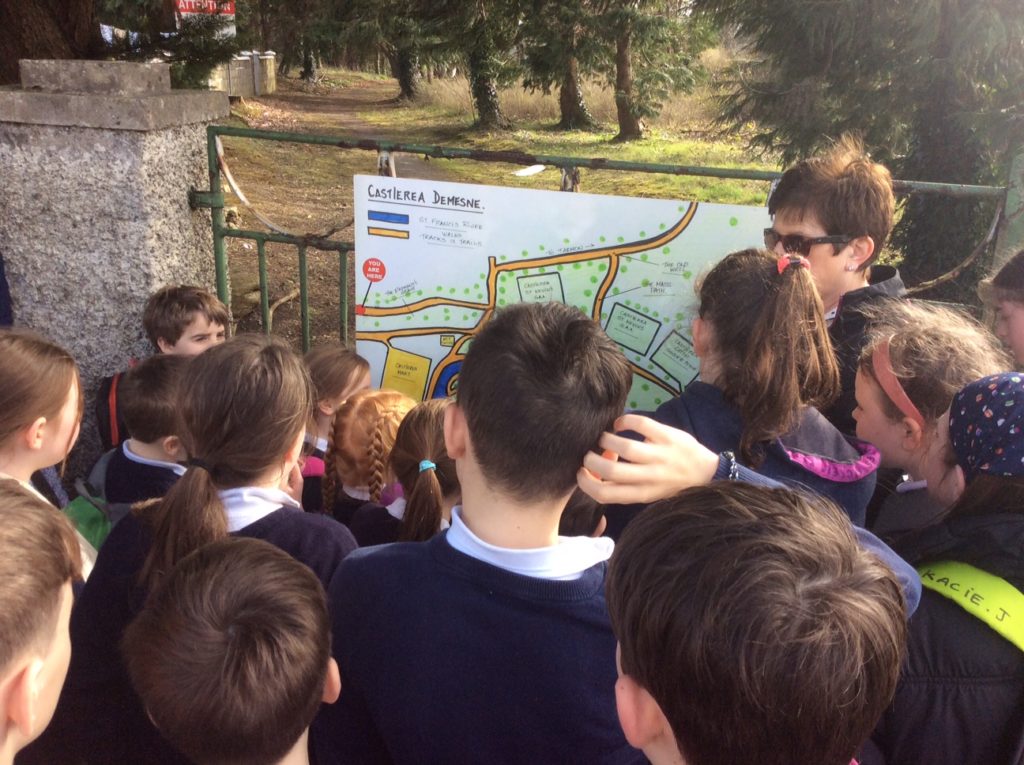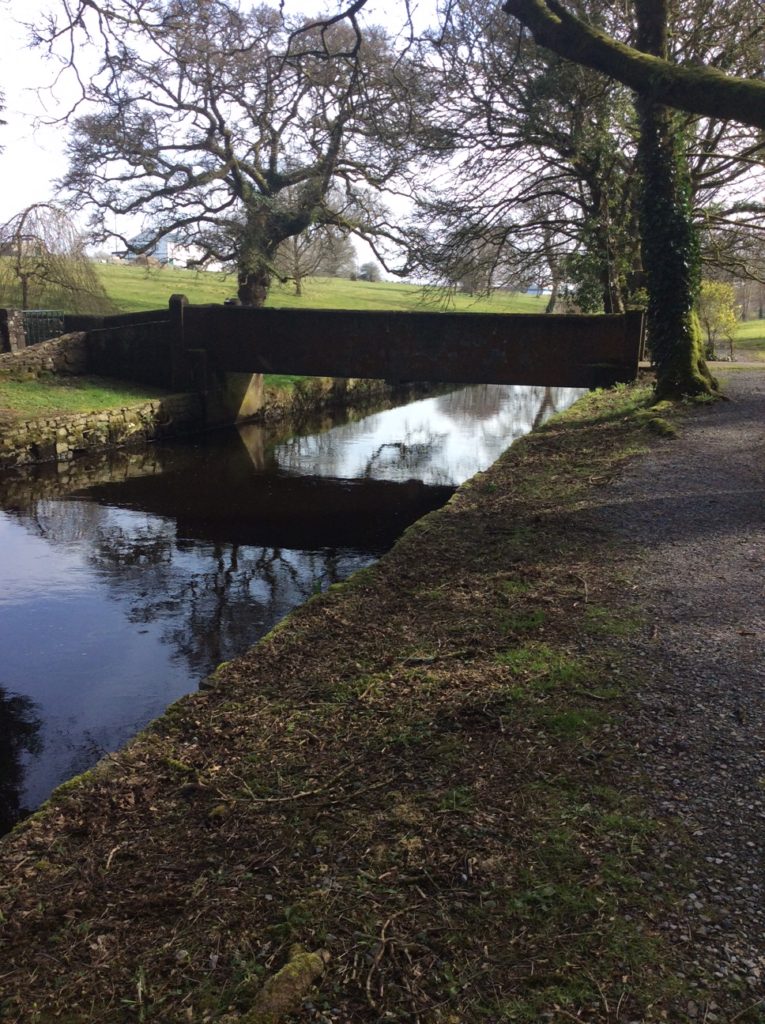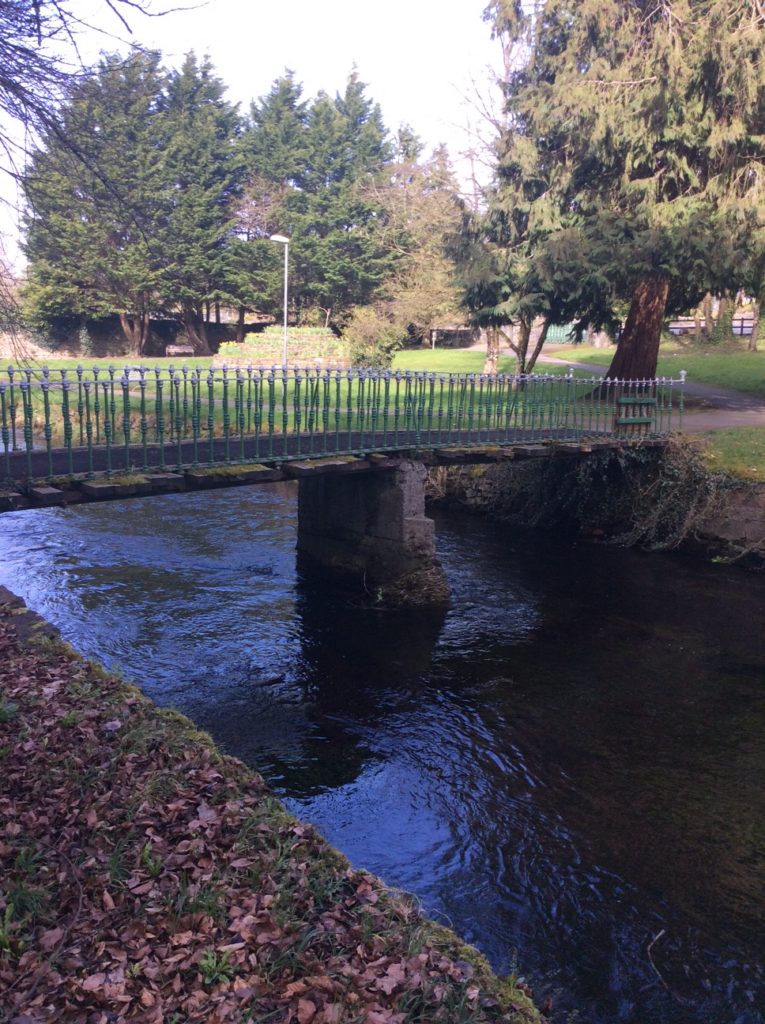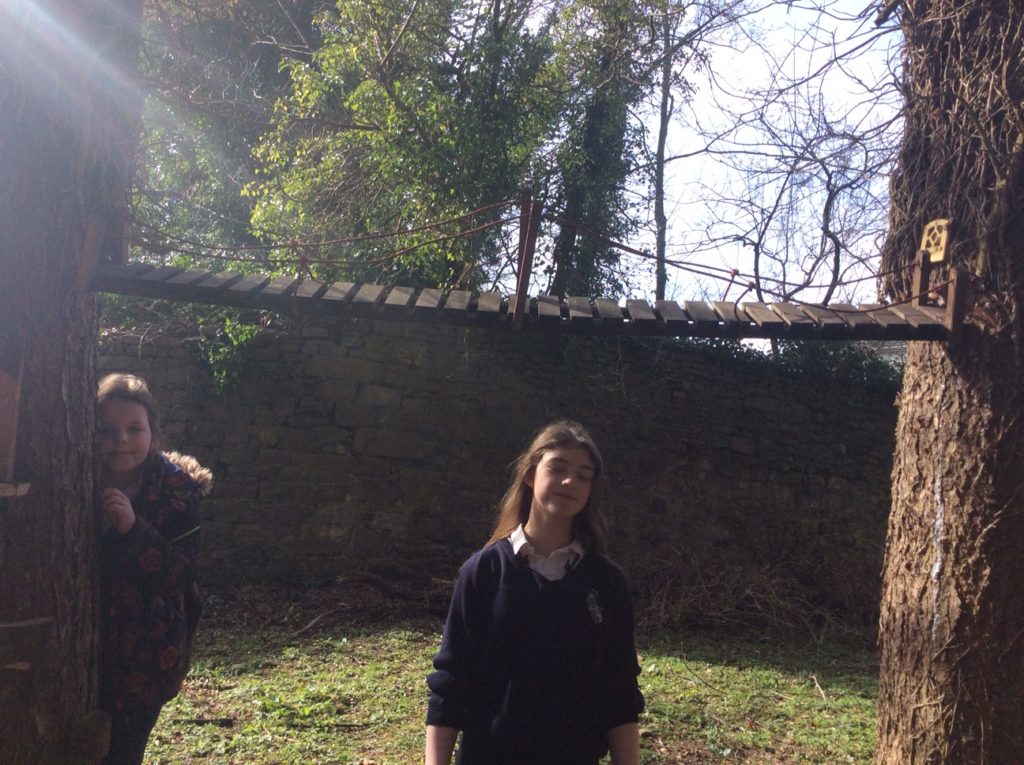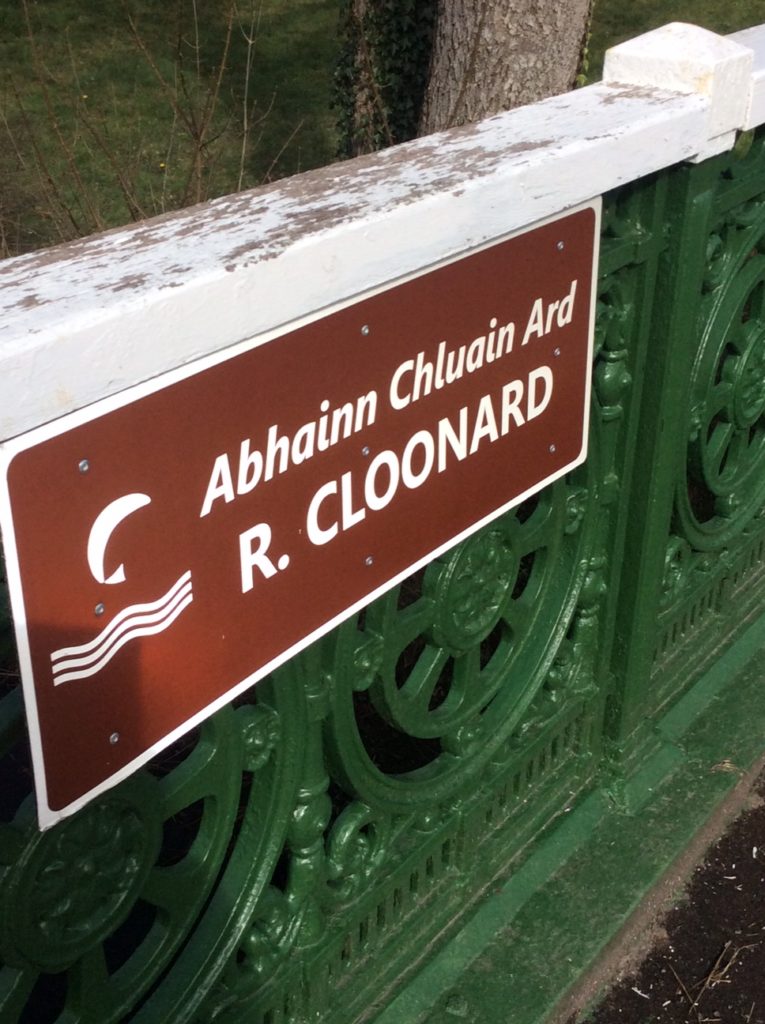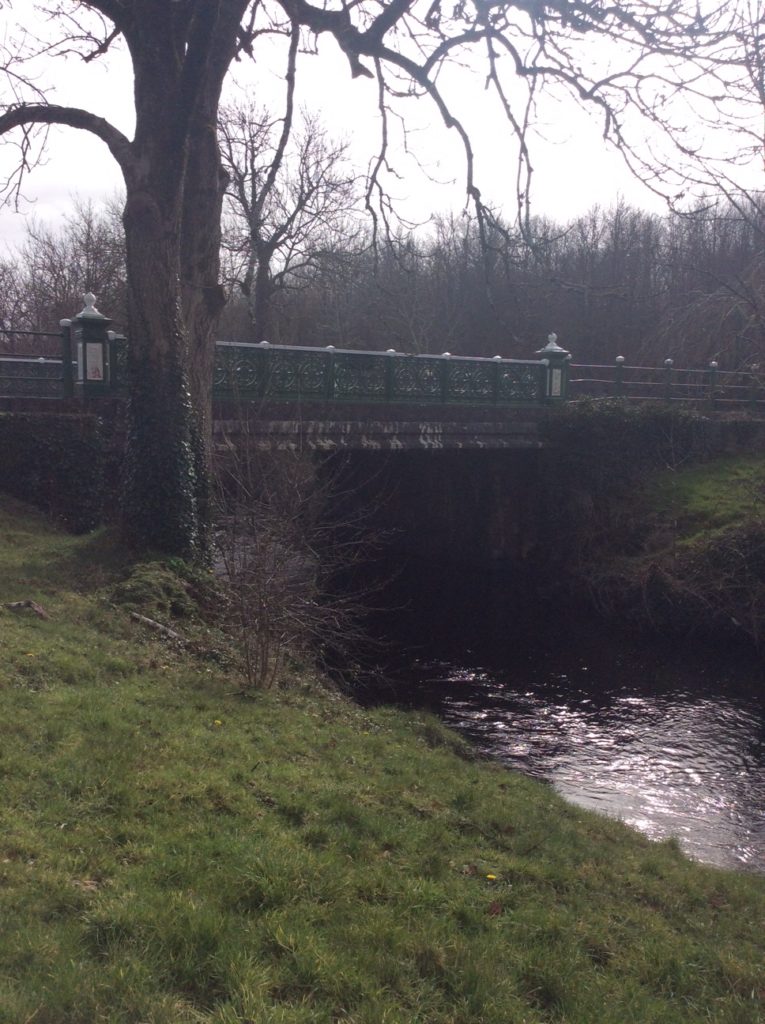We have achieved our Discover Science and Maths Award!!! Our Plaque of STEM Excellence will be sent to our school in June!!! Well to the staff, pupils and parents for all their hard work!!!



We have achieved our Discover Science and Maths Award!!! Our Plaque of STEM Excellence will be sent to our school in June!!! Well to the staff, pupils and parents for all their hard work!!!



In Abi’s experiment, titled ‘Battery Power’, the bottom of 2 lead pencils were attached to a battery. The pencil tips were dipped in water. Bubbles formed at both pencil tips. More bubbles formed at the tip of the pencil attached to the negative part of the battery. Most of the bubbles were hydrogen and a few oxygen. The pencil tip where hydrogen was forming was attached to the negative part of the battery and the pencil tip where oxygen was forming was attached to the positive part of the battery.
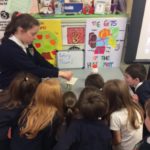
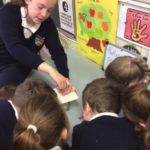
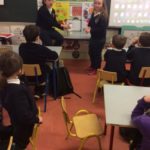
In this experiment titled, ‘Selecting the best paper for separating colours in chromatography’, Maebh cut strips of different paper (equal in length) and dipped them in water. Members of the class formed a hypothesis to guess which paper would allow the colour to transfer best (tussue, card, paper or coffee filter paper). The class came to the conclusion that the coffee filter paper worked best.
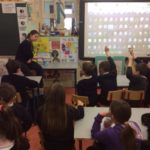
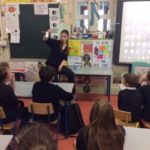
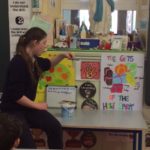
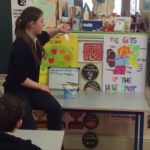
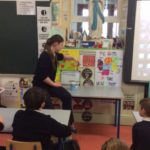
In Cian’s experiment, the water and mirror acted like a prism, splitting the light into the colours of the spectrum (when light passes from one
medium to another, for example from air to water, its speed and direction change; this is called refraction.) The different colours of light spread out, separated and the spectrum could be seen clearly!
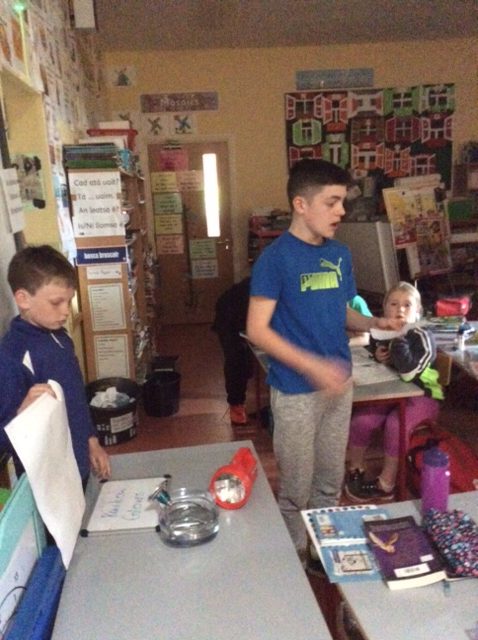

We have made bird boxes to attract more wildlife to the garden. We have also been busy weeding to prepare the ground for planting.
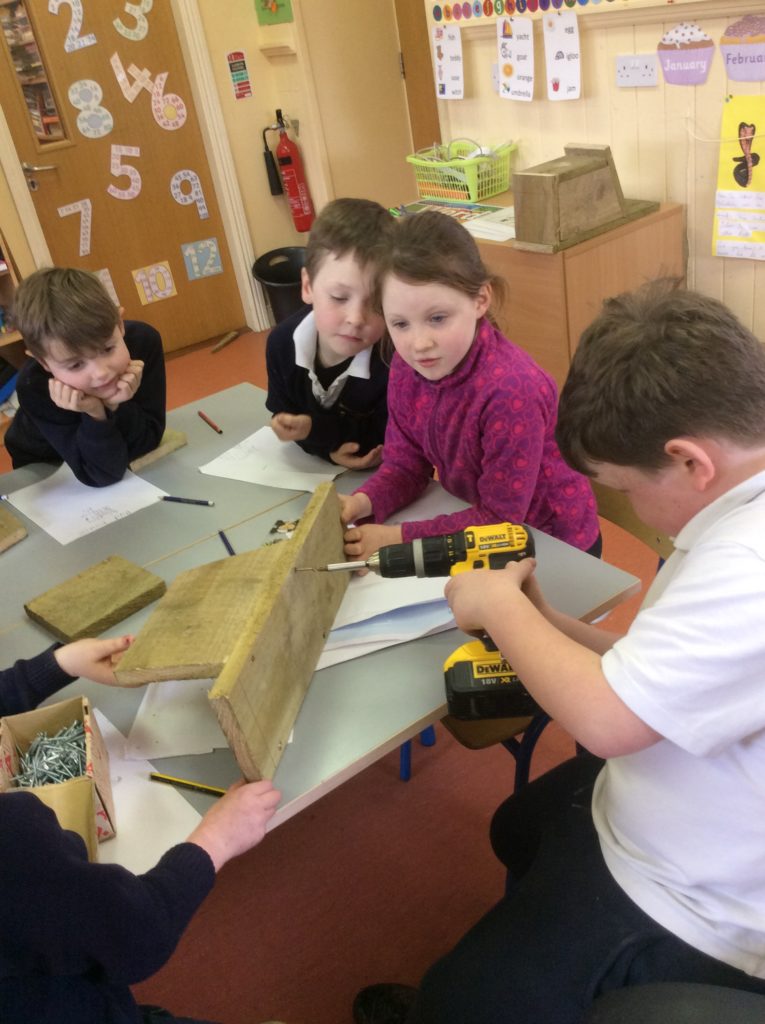
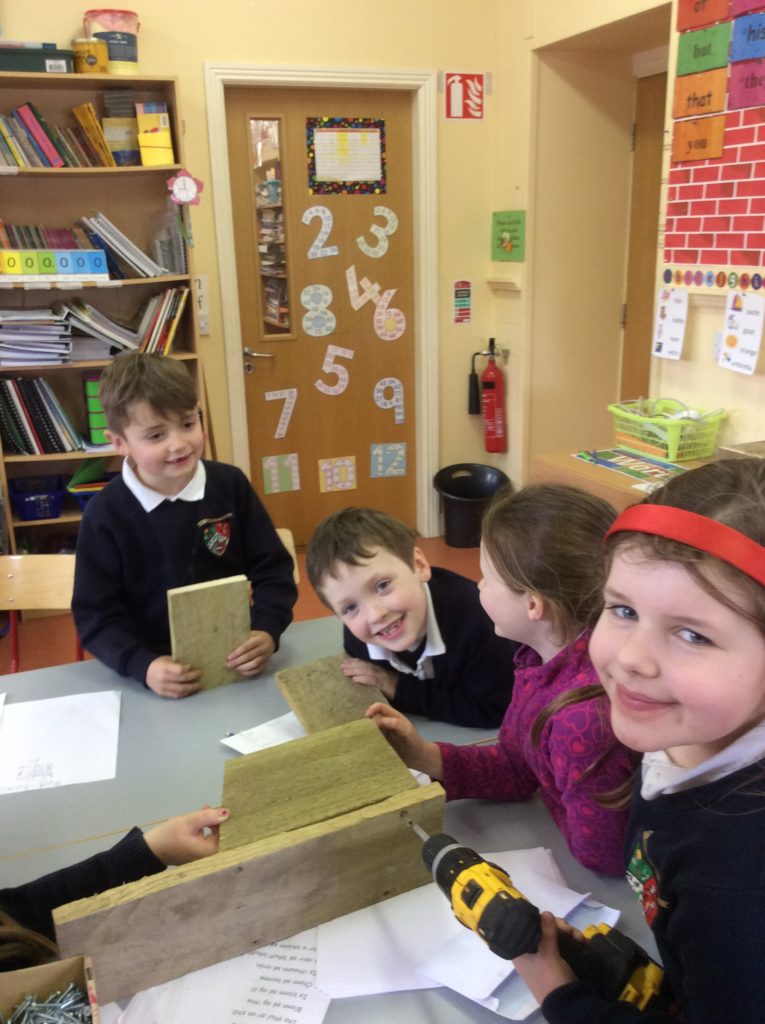
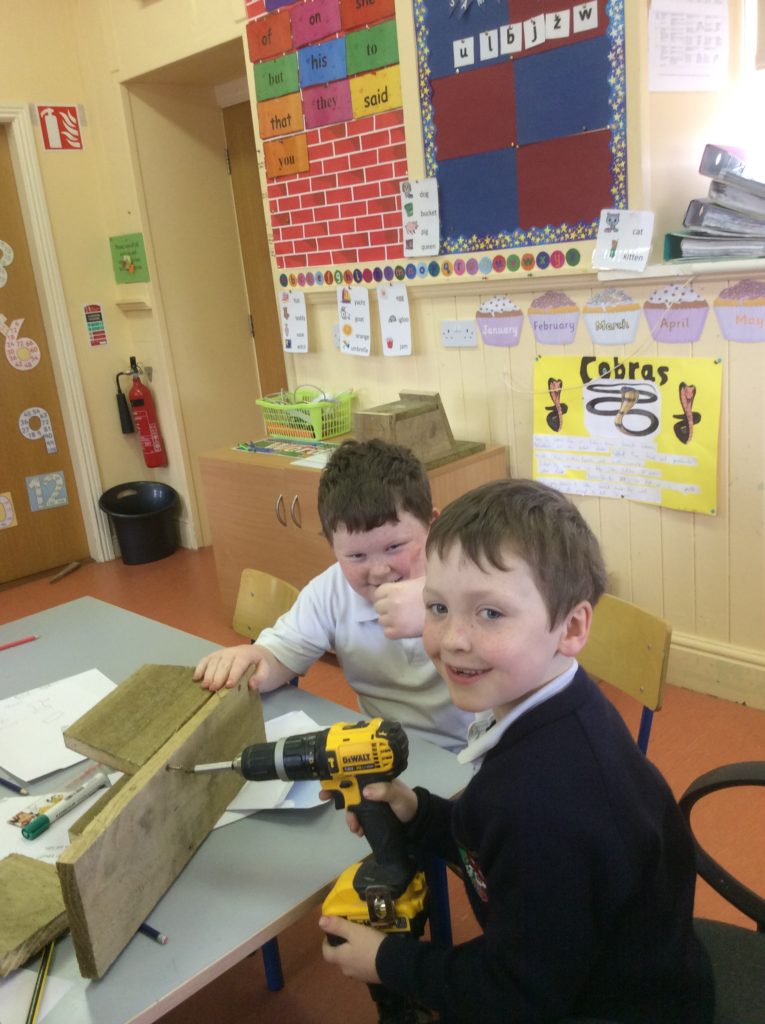
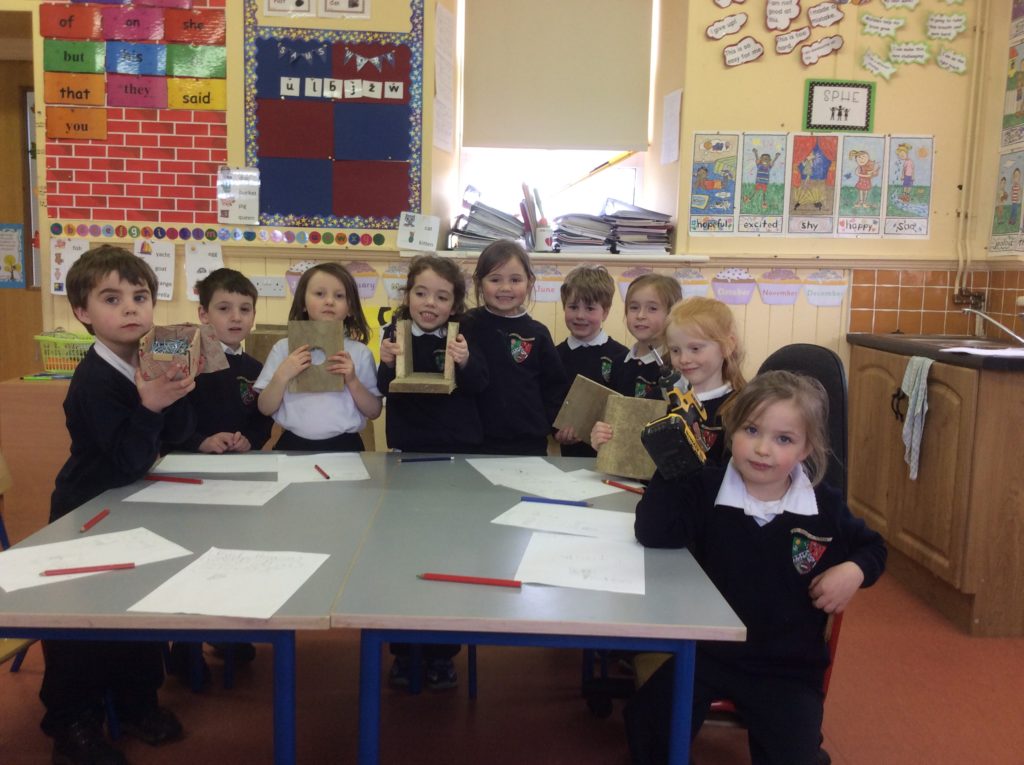
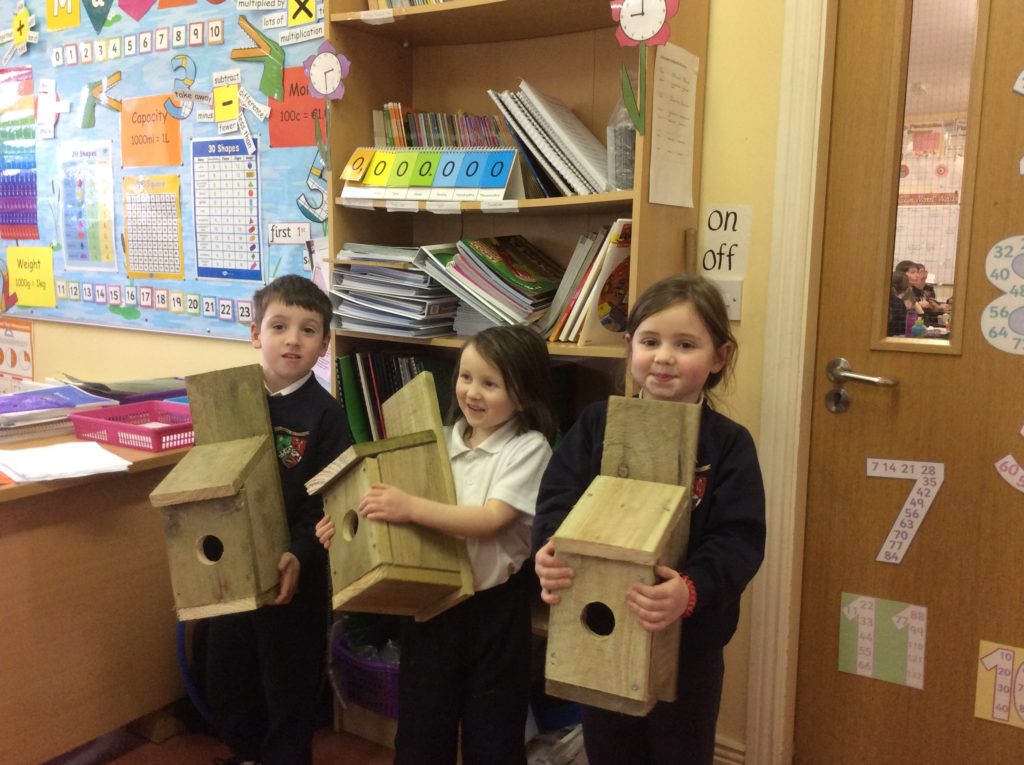
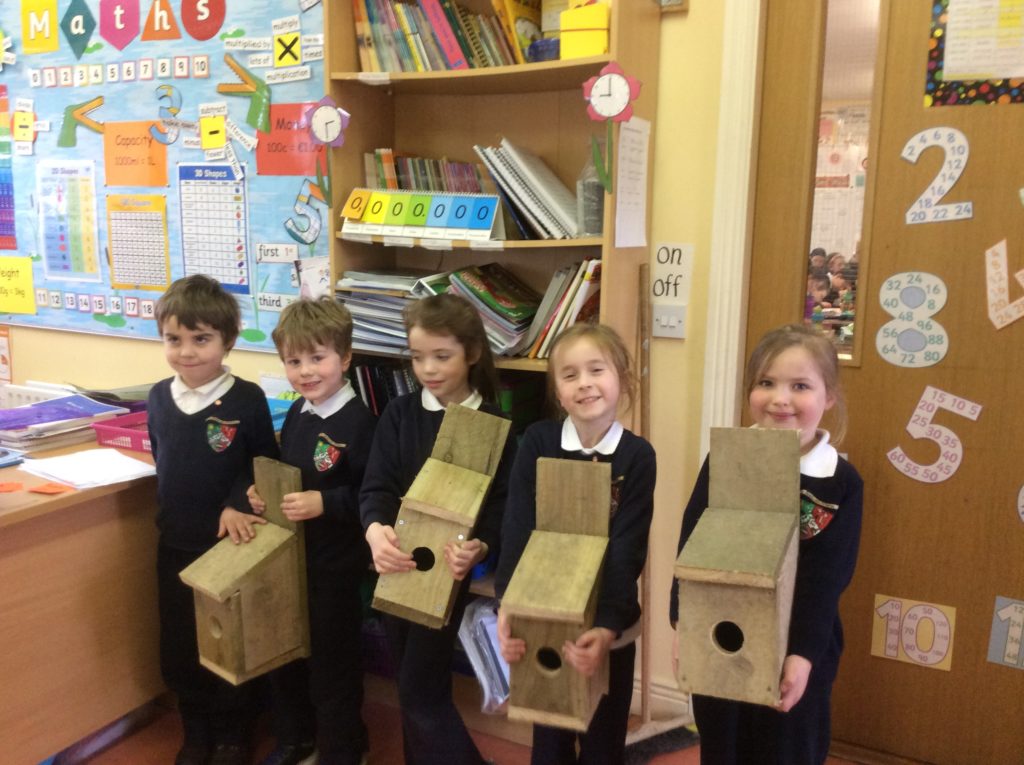
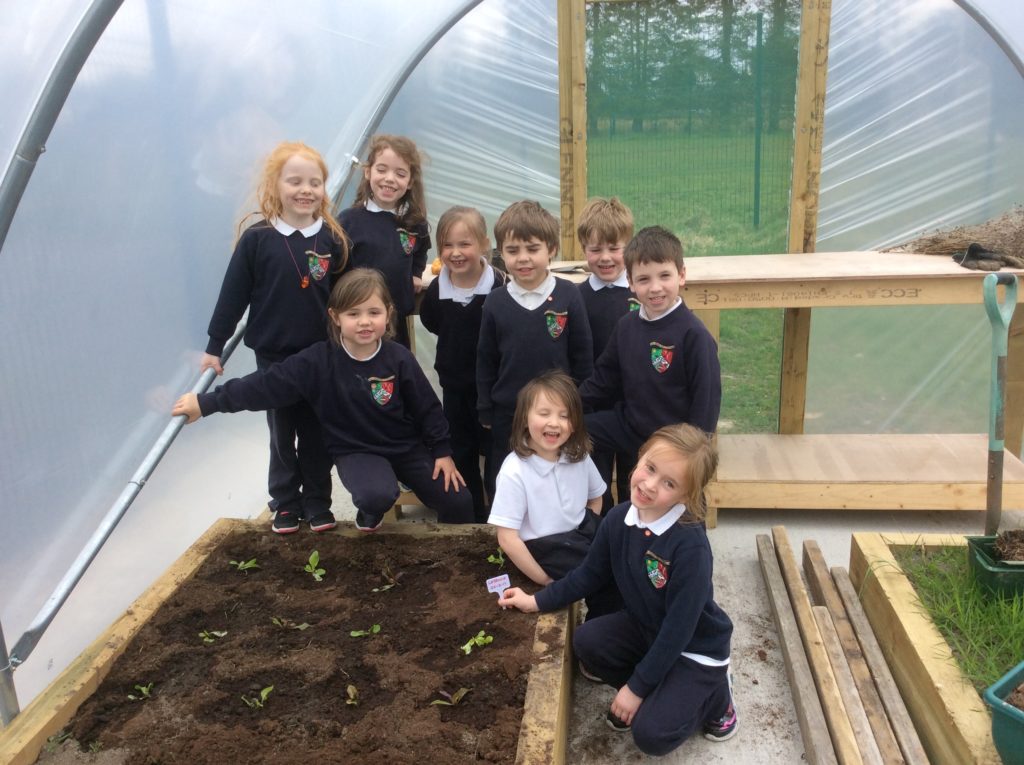
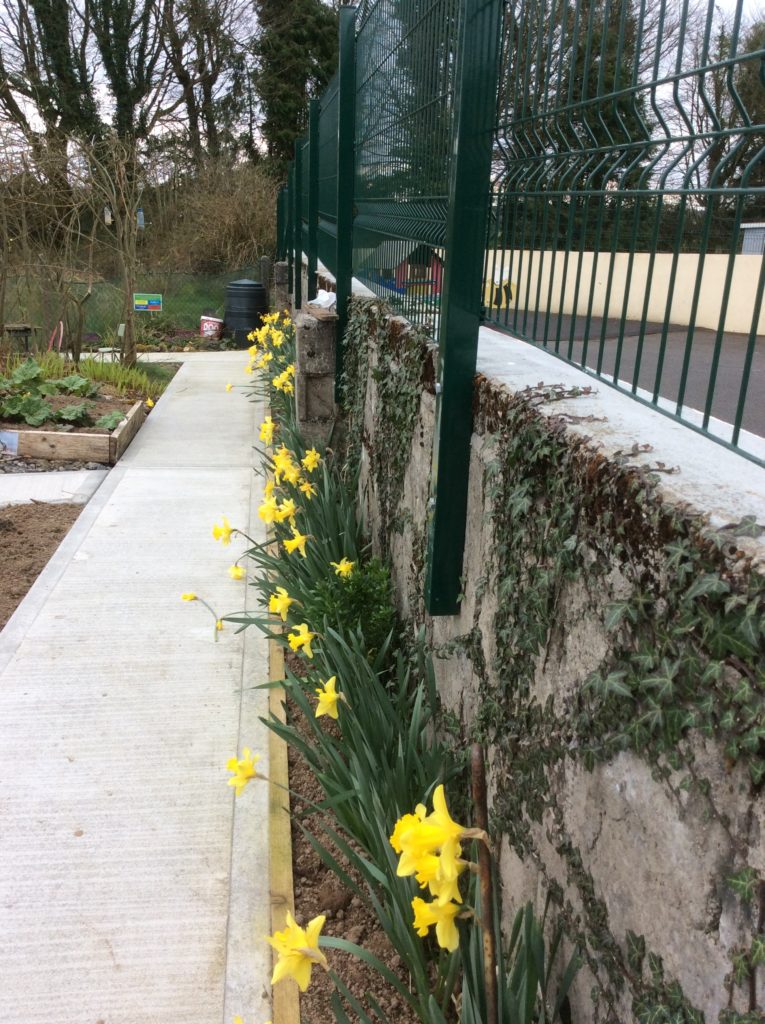

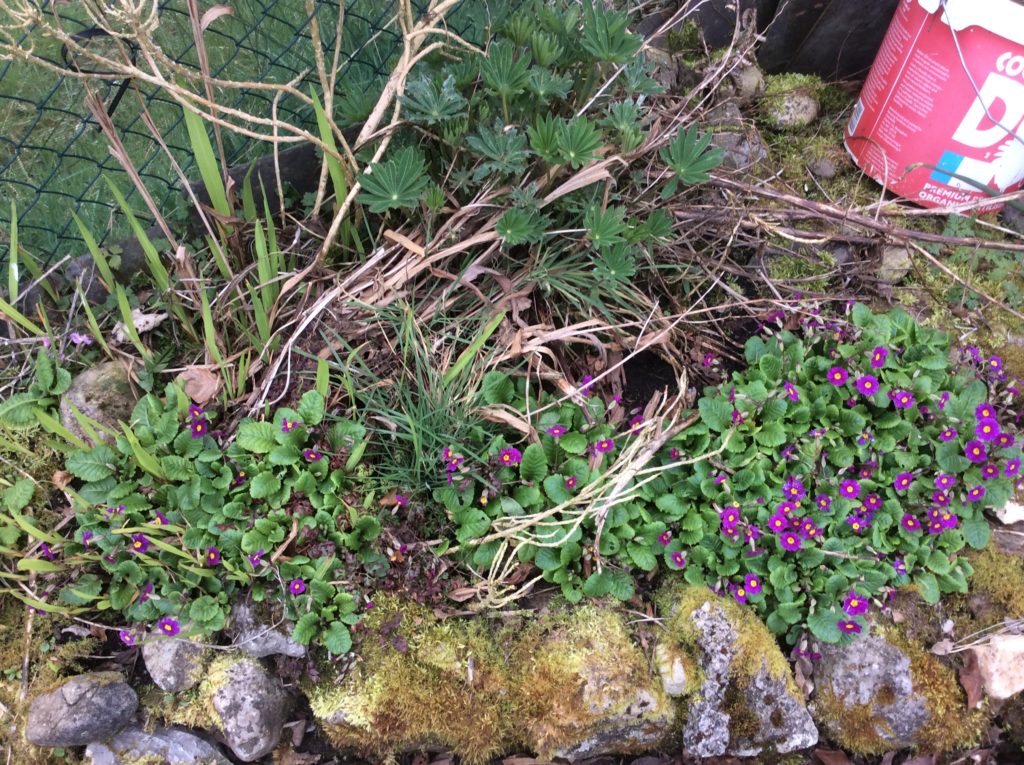
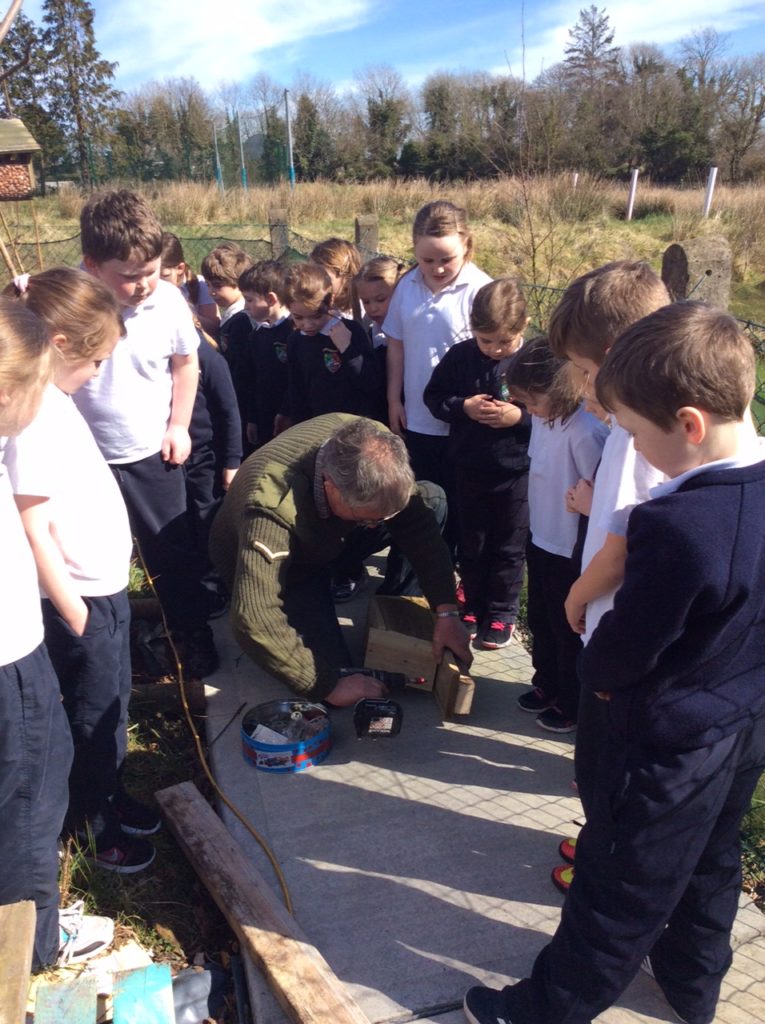
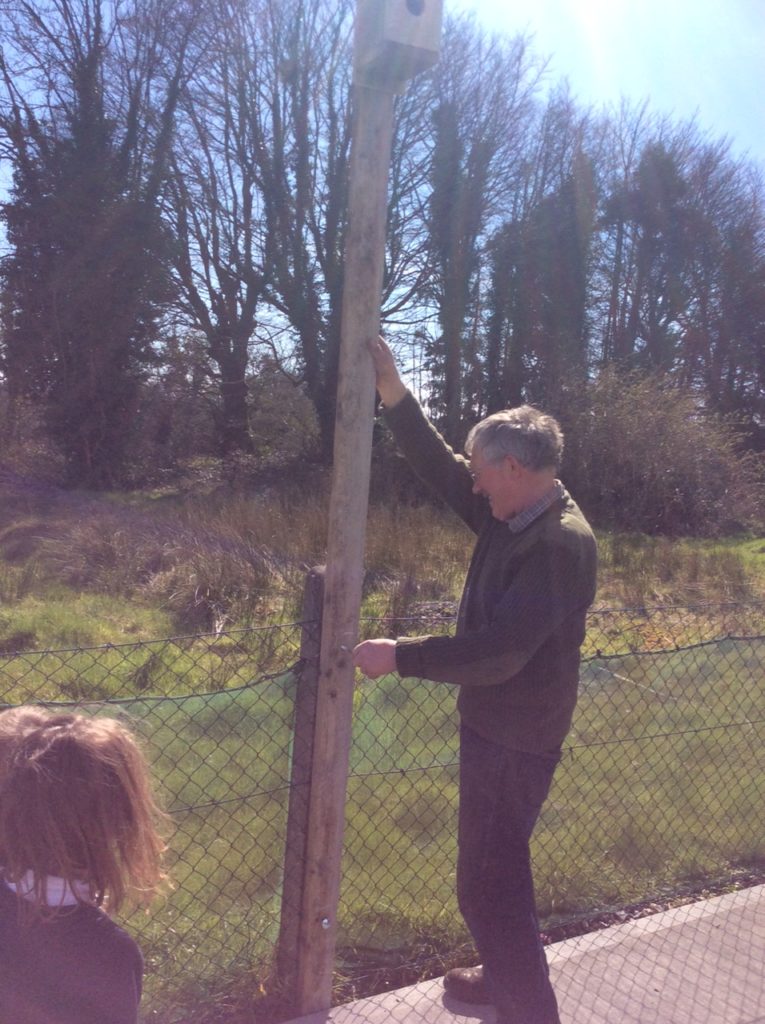
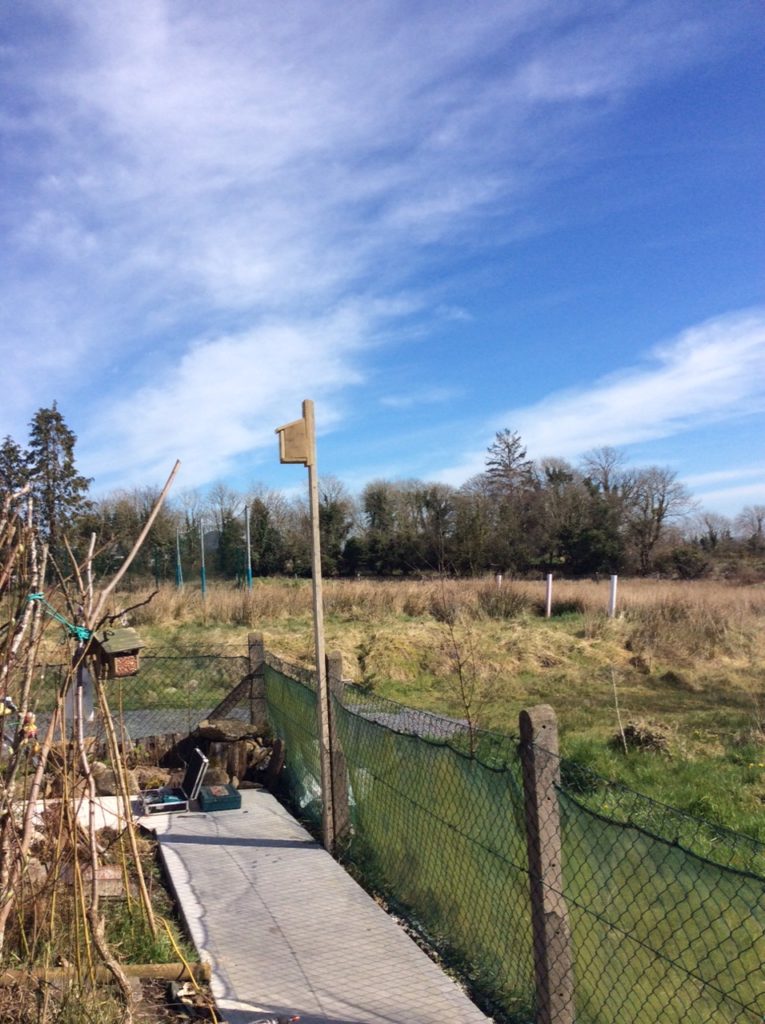
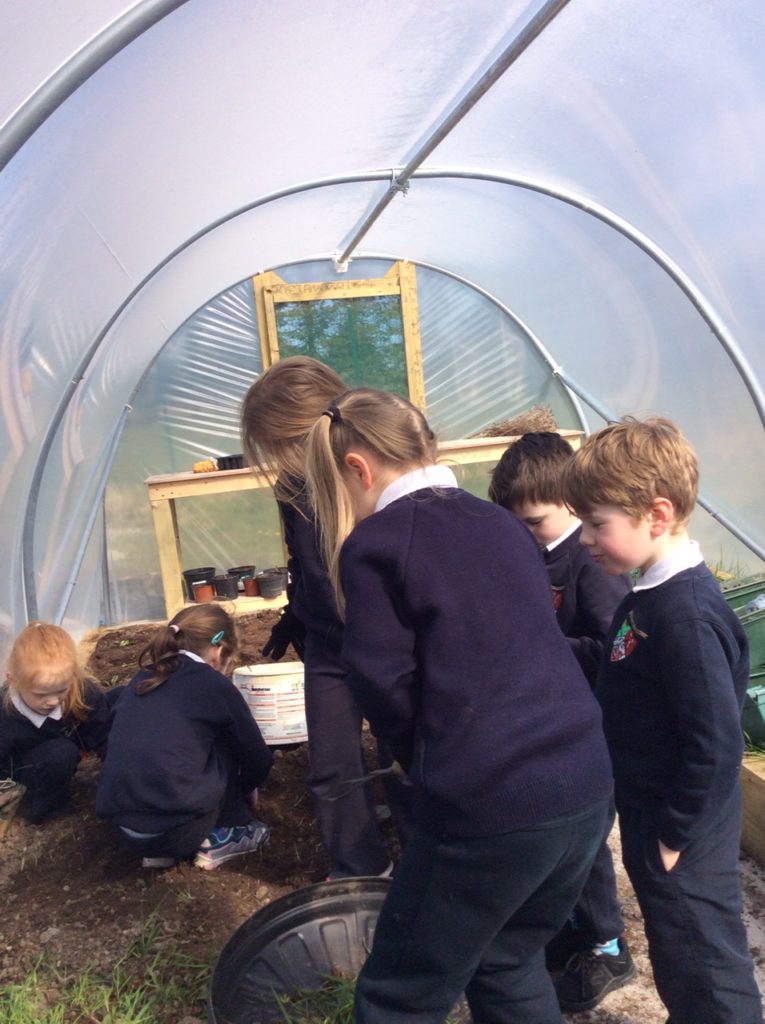
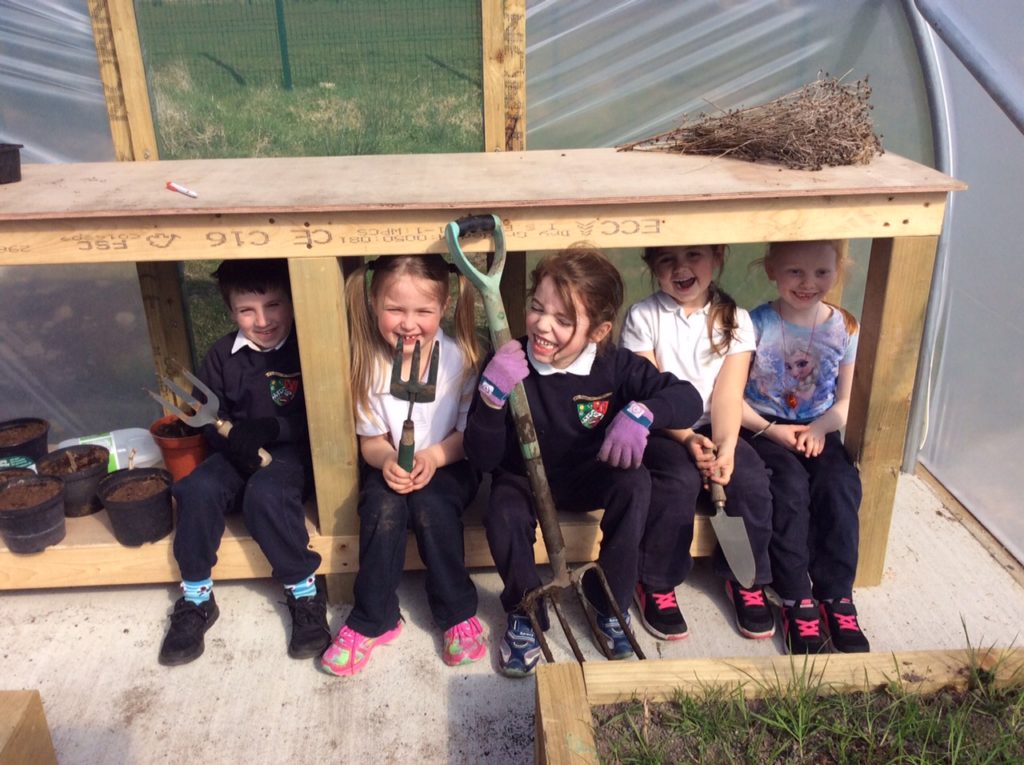
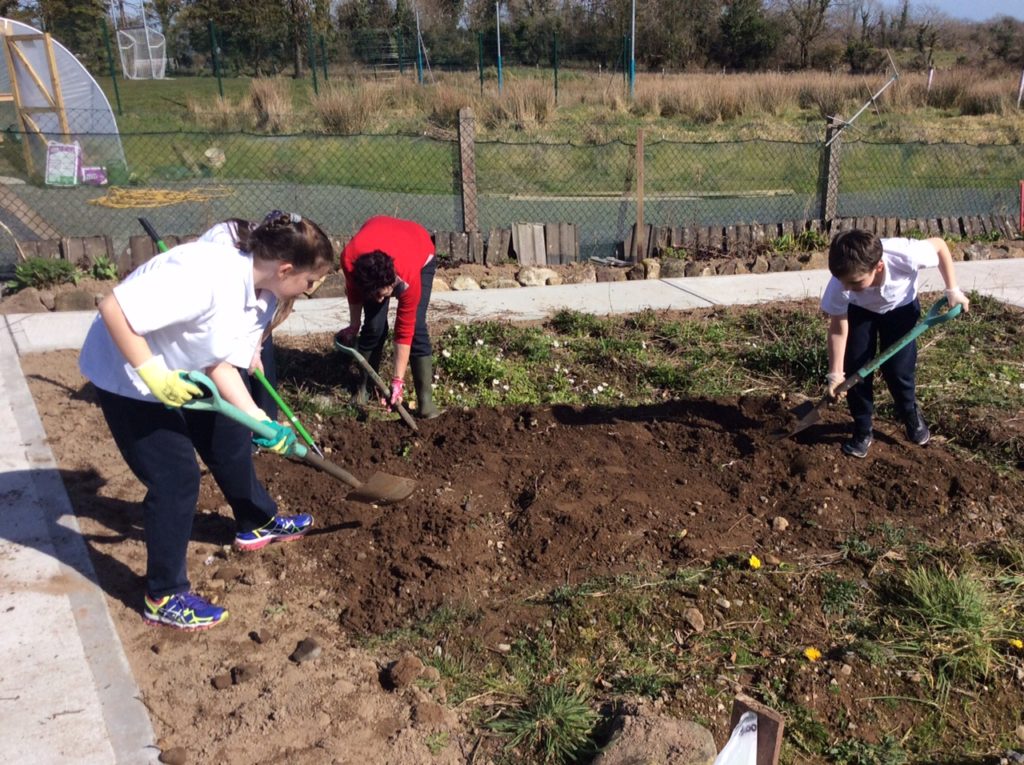
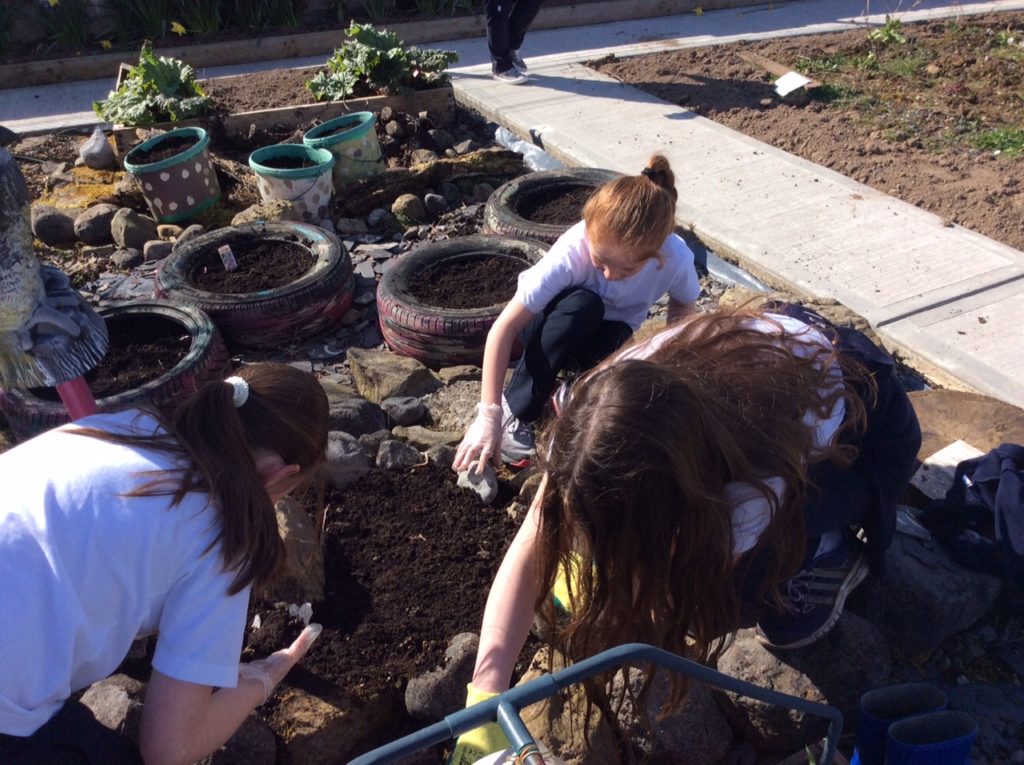
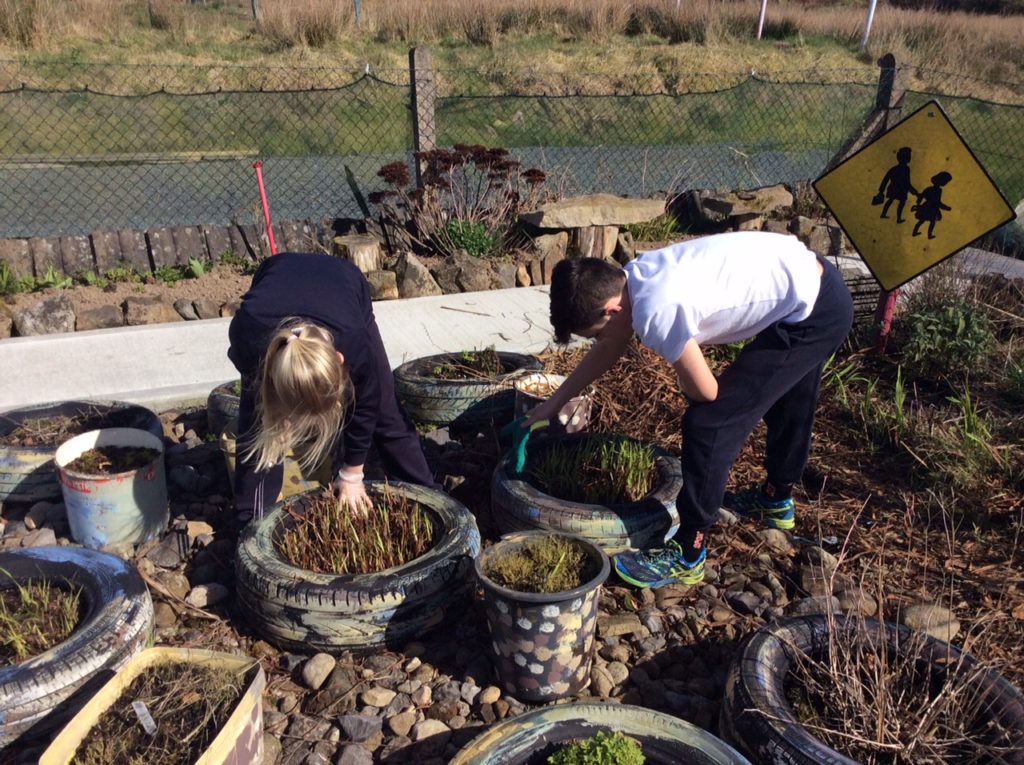
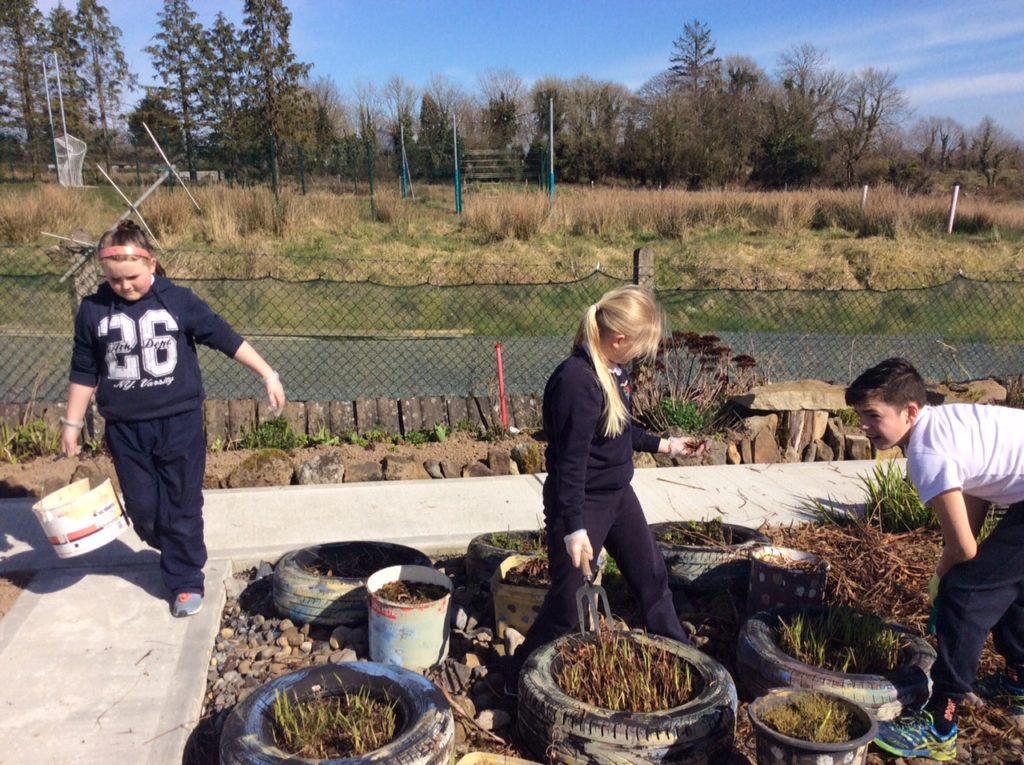
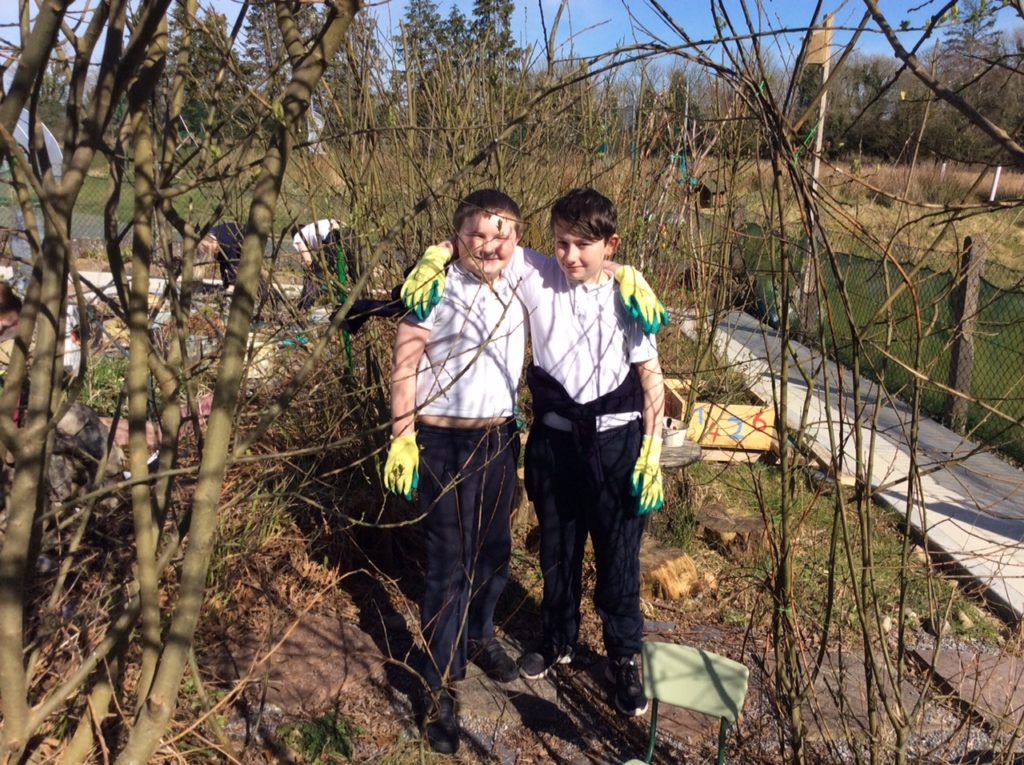
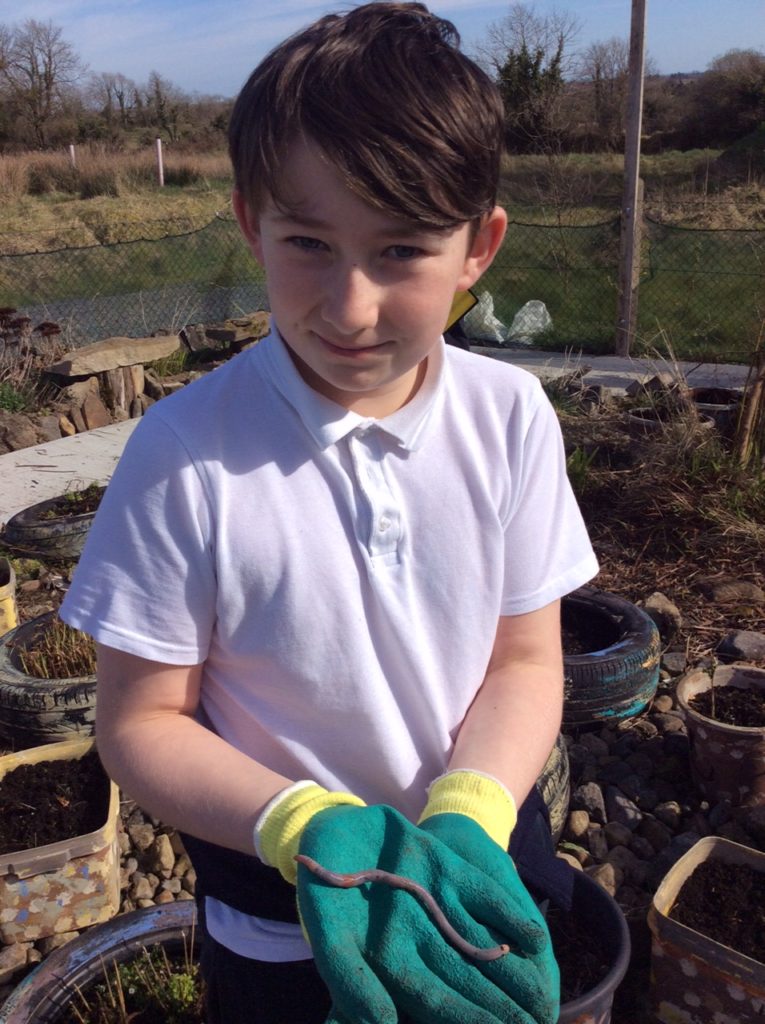
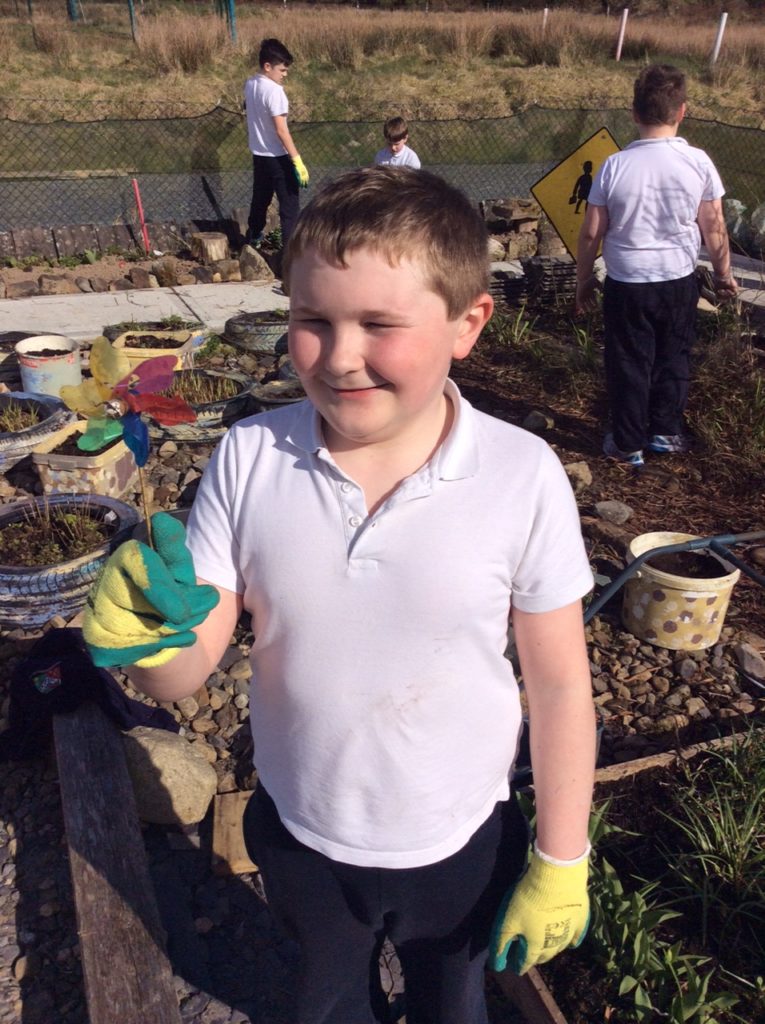
The children were asked to research, design, plan and build a bridge longer than 30cm. The bridge also had to sustain the weight of a bag of sugar for at least 5 minutes. The children experimented with different types of materials and techniques during the construction process. The results were outstandingly creative!
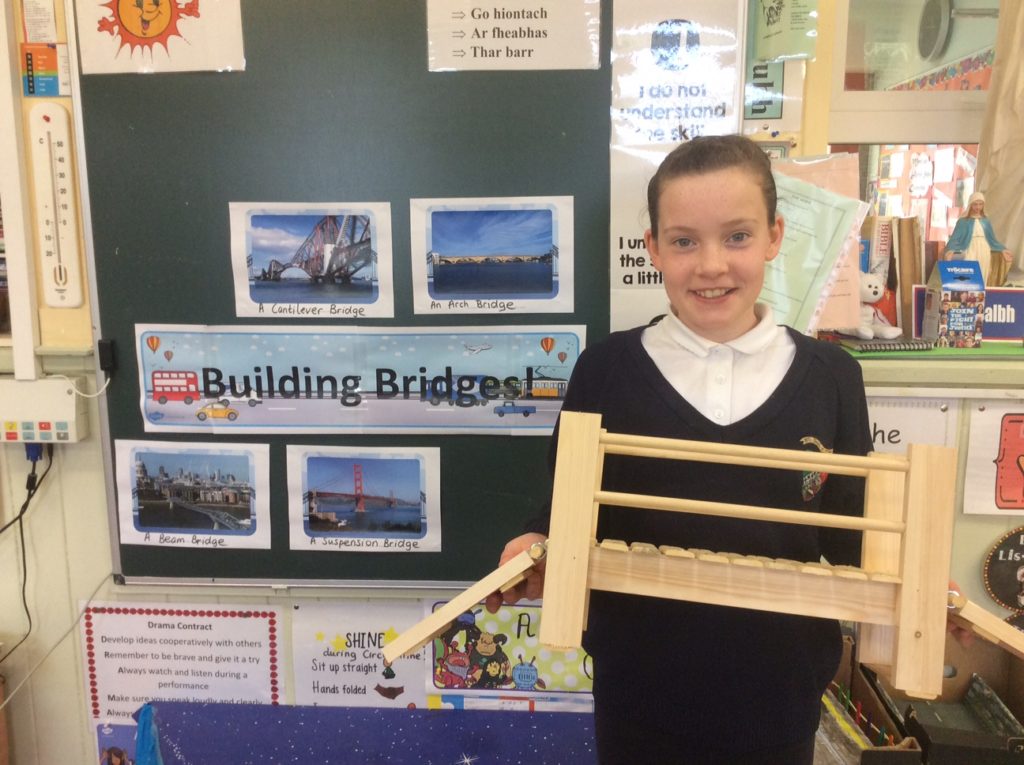
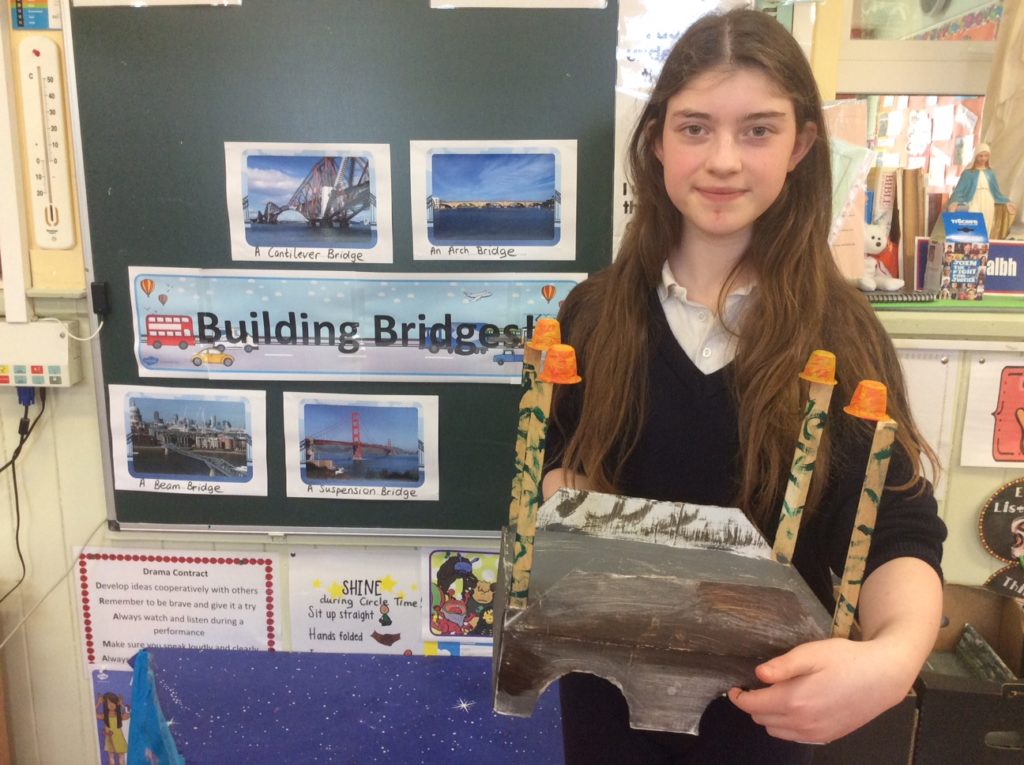
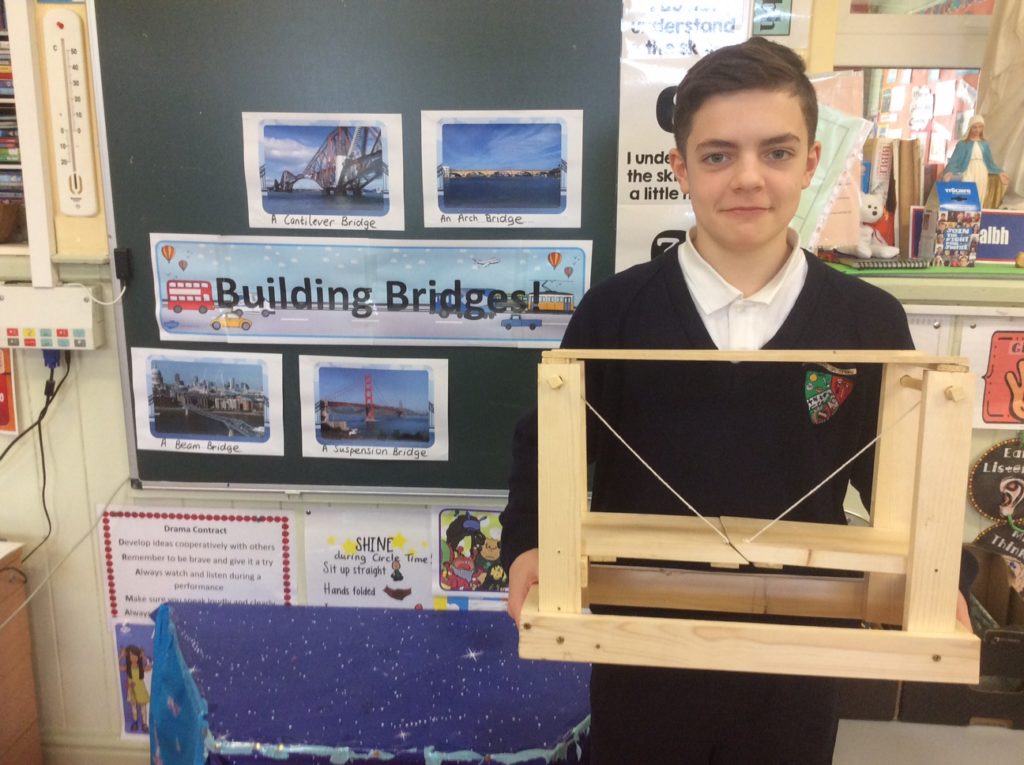
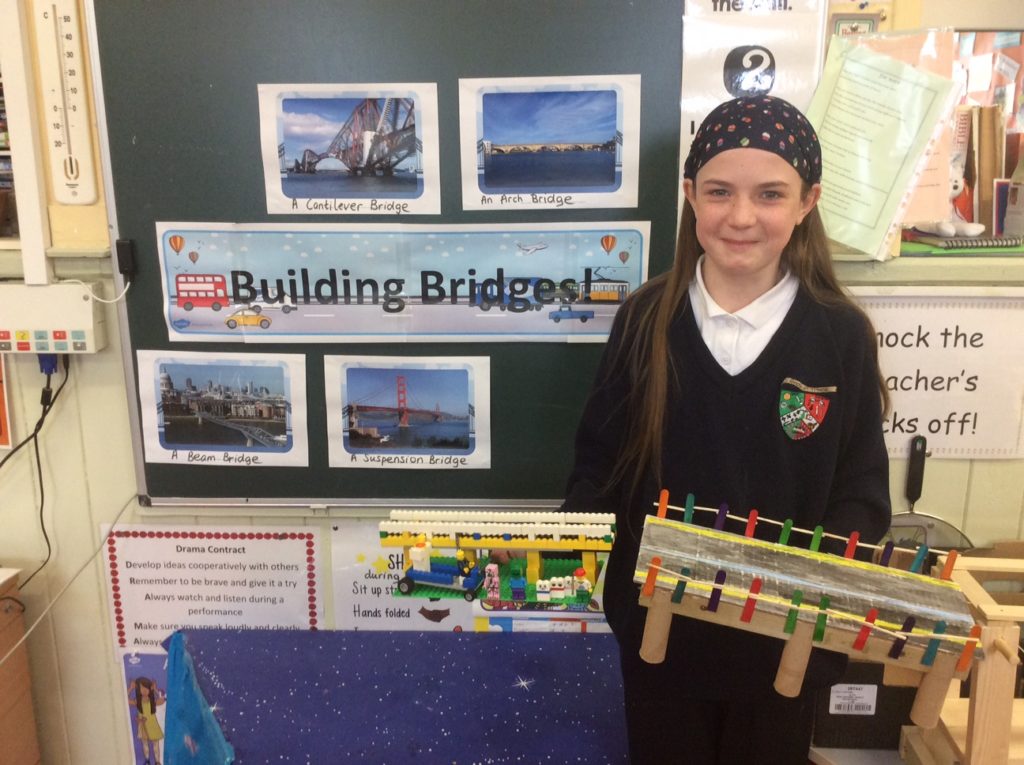
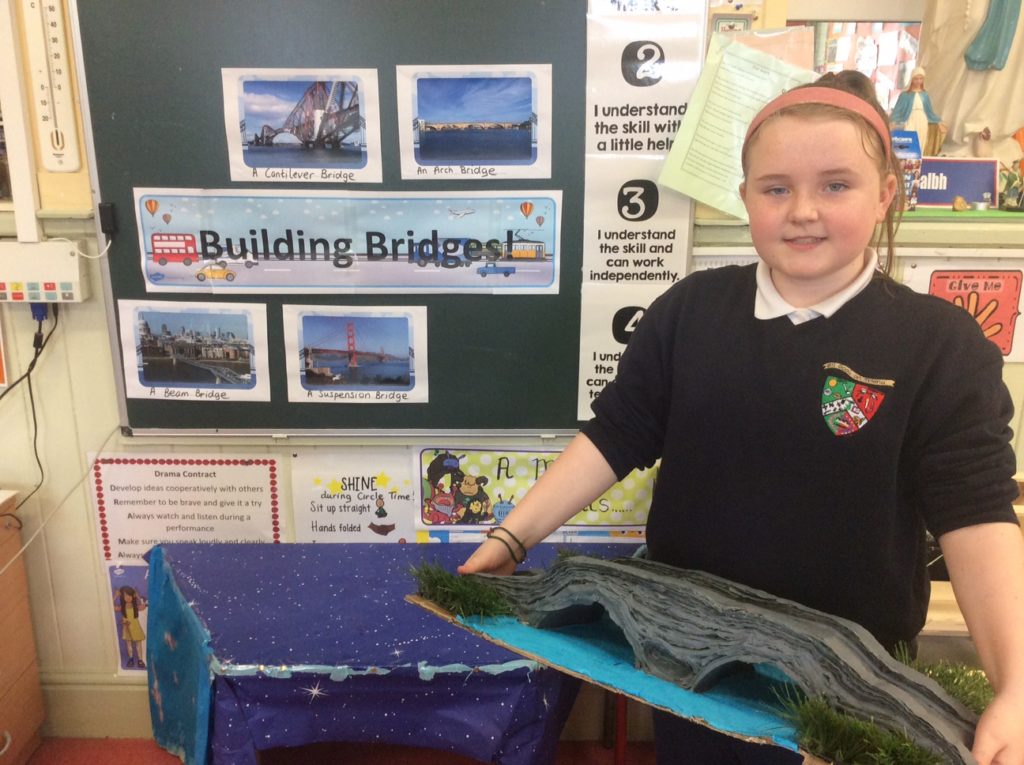
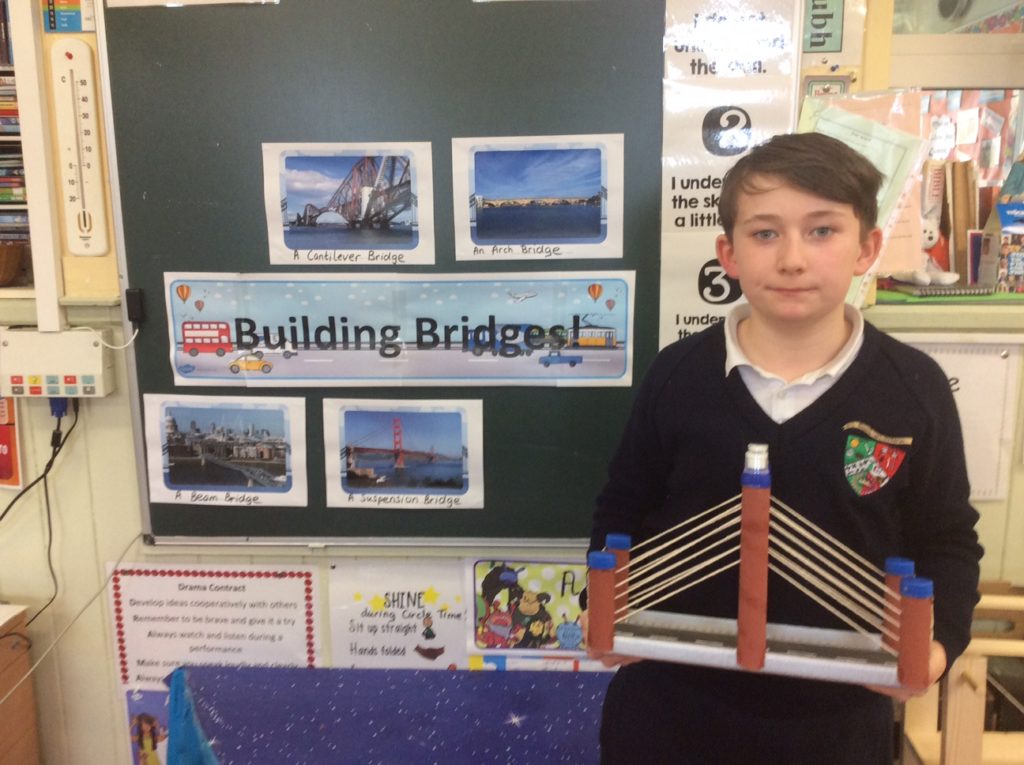
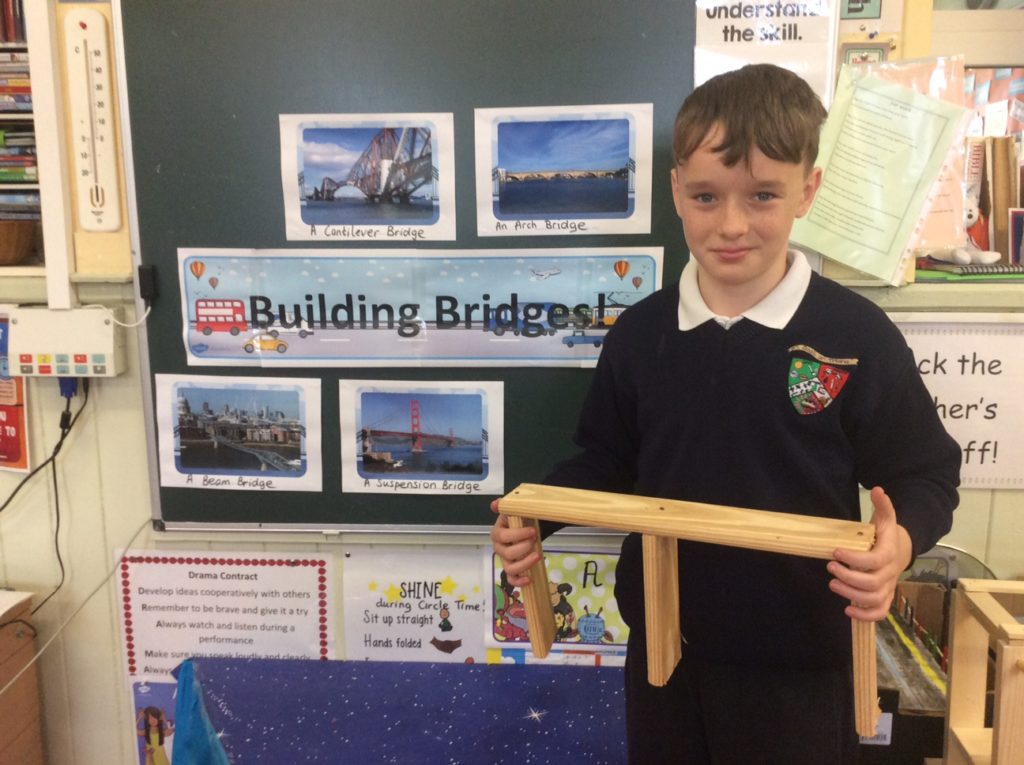
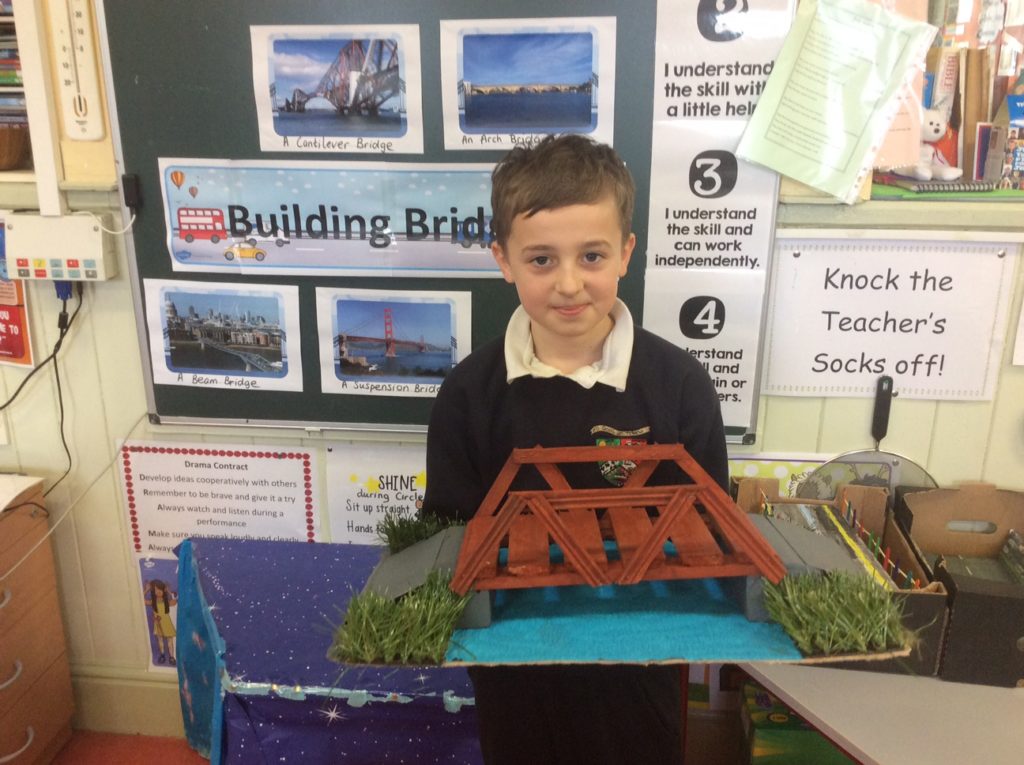
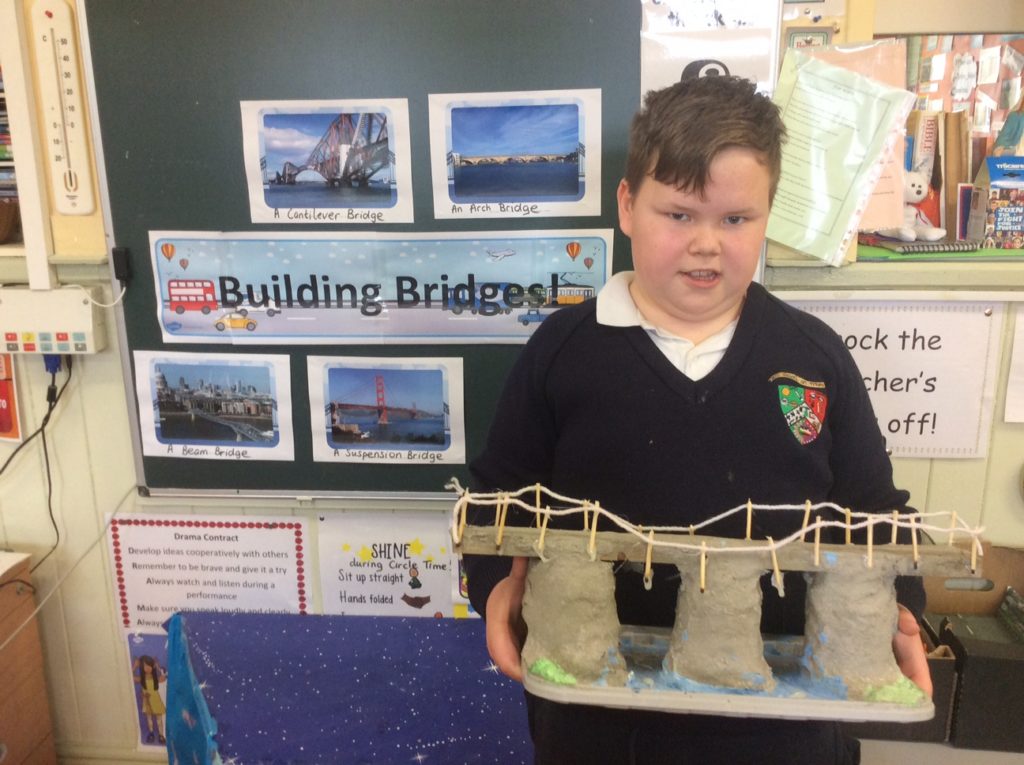
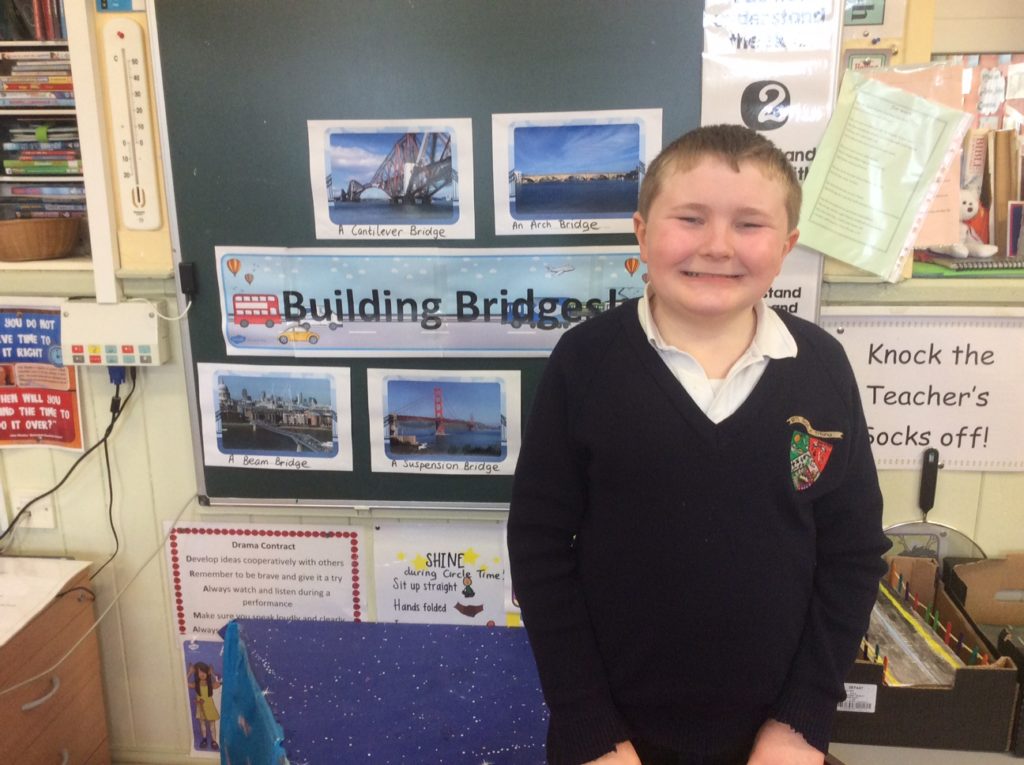
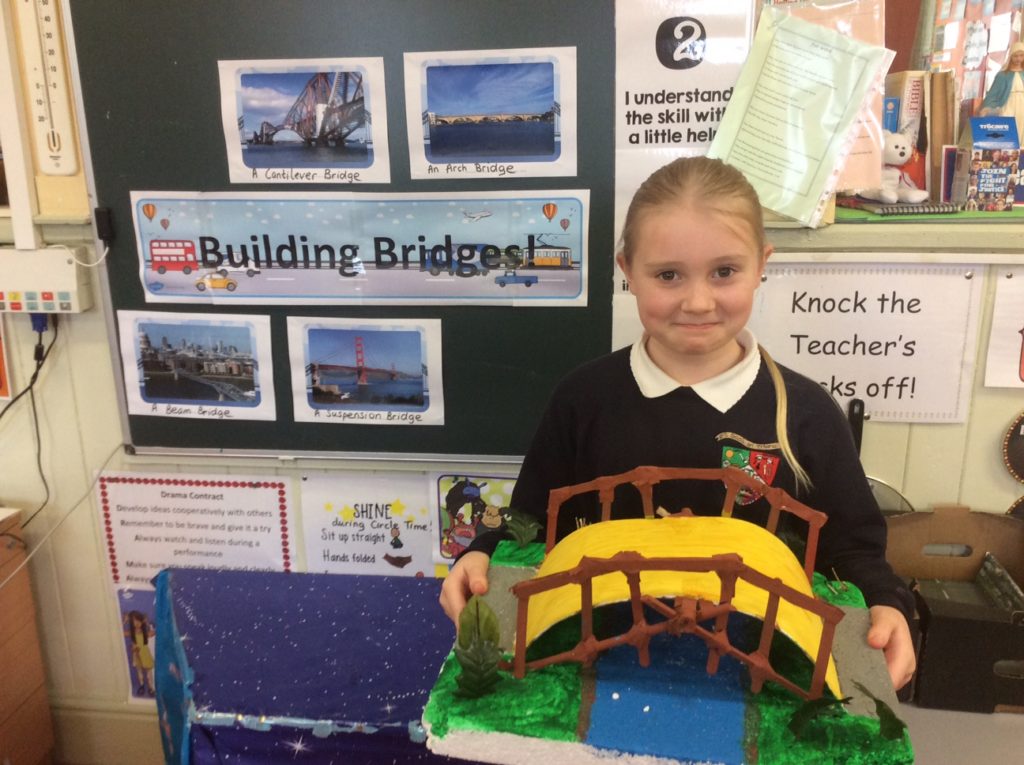
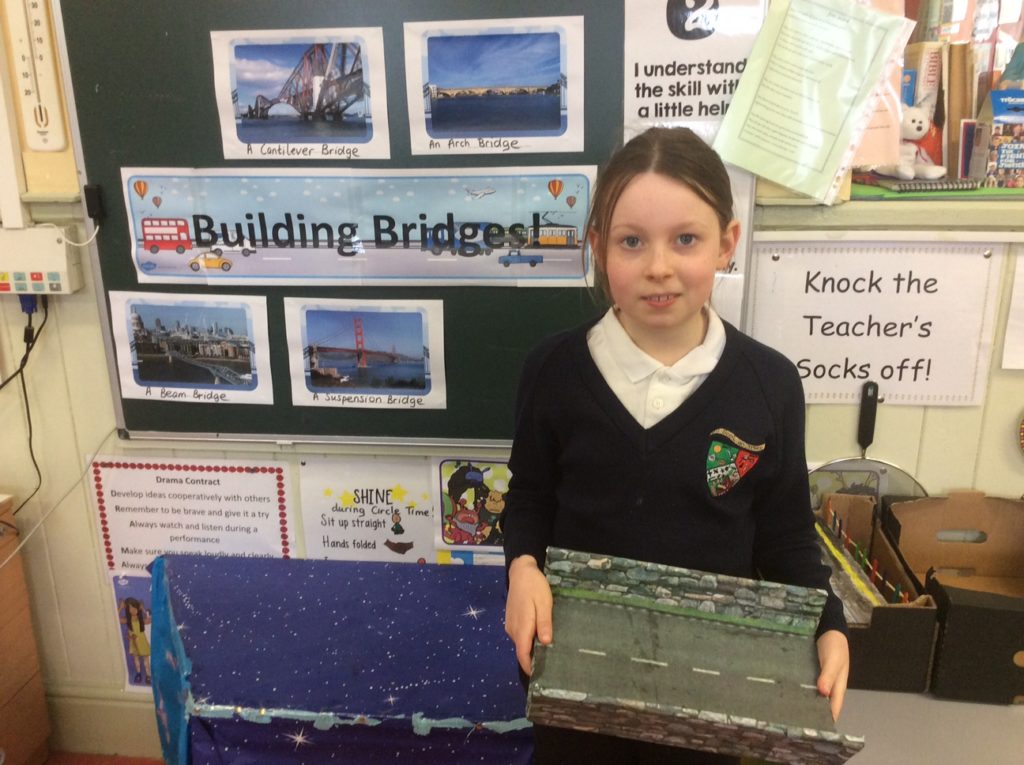
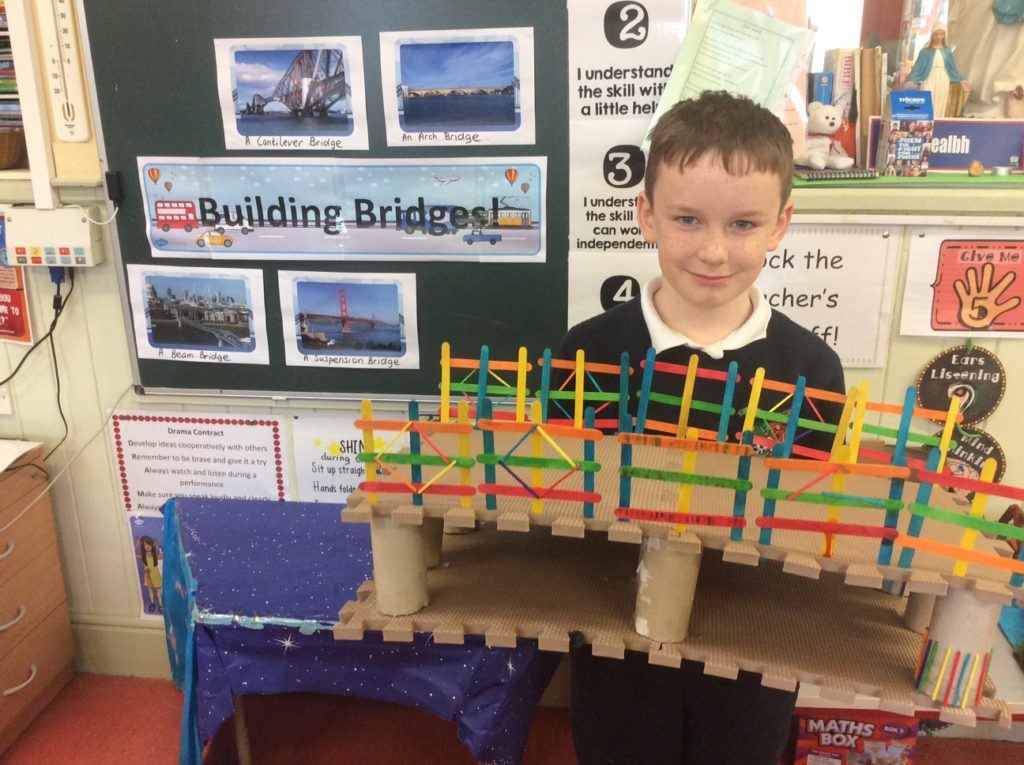
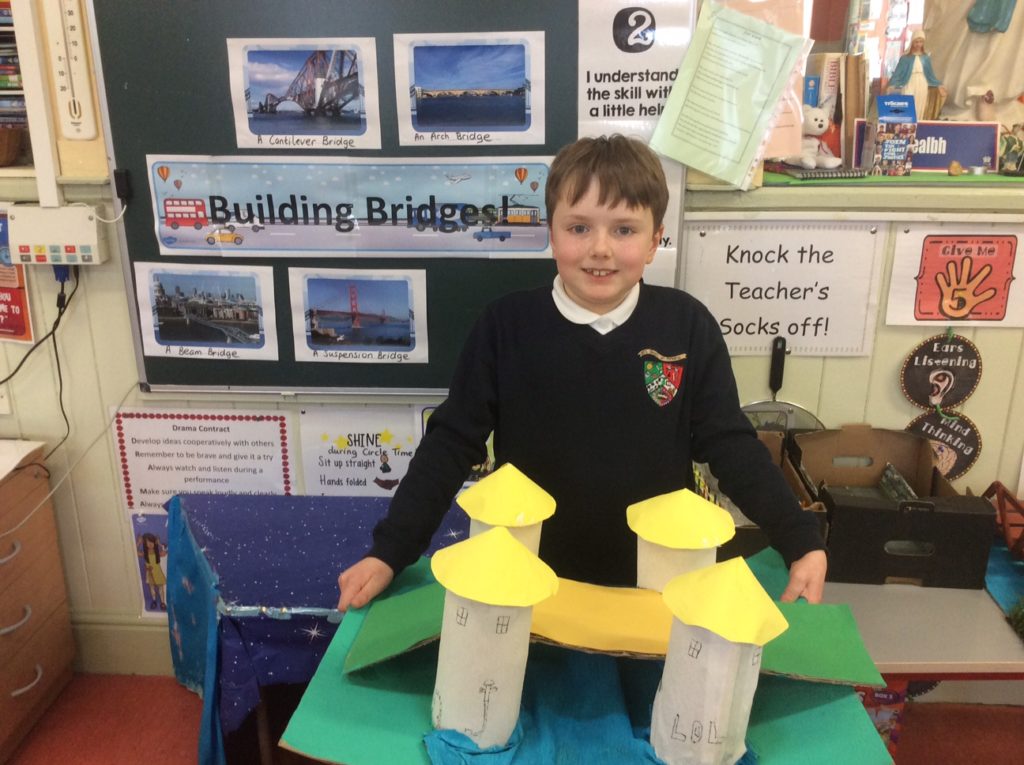
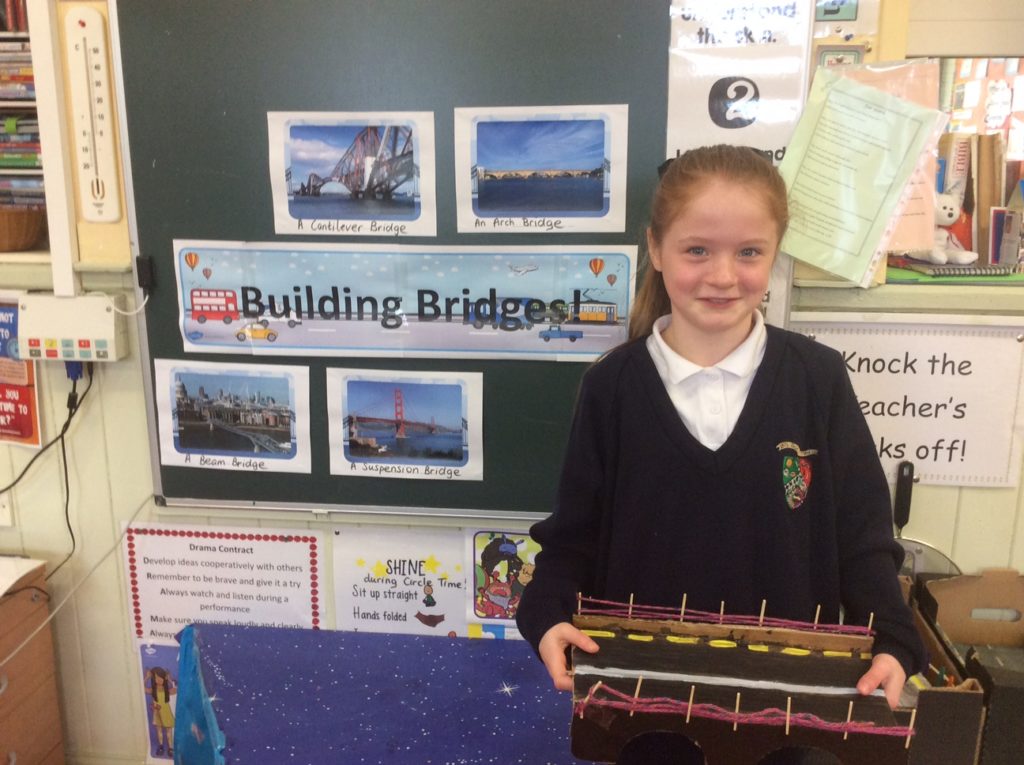
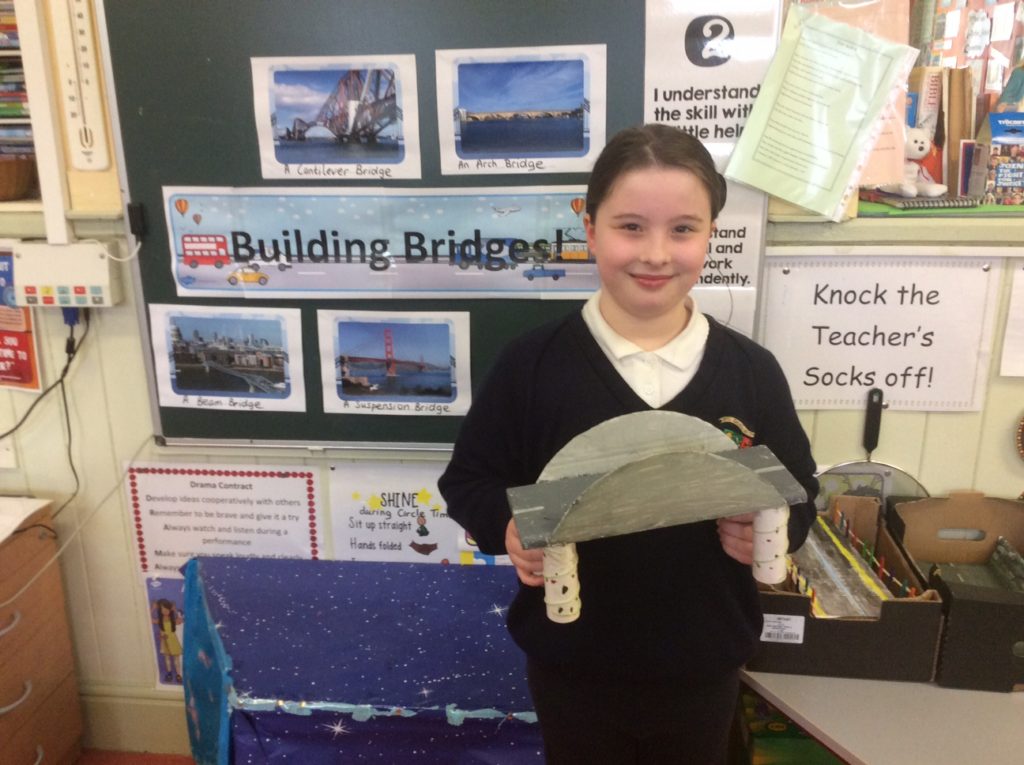
Engineers are naturally curious about how things work. In this activity, the children built a cradle using sellotape and straws. Their goal was to ensure that their raw egg landed safely on the ground when dropped from a height of 50cm. Some of the cradles they built were not big enough and the egg cracked. Other succeeded! All part of the exploration process 🙂
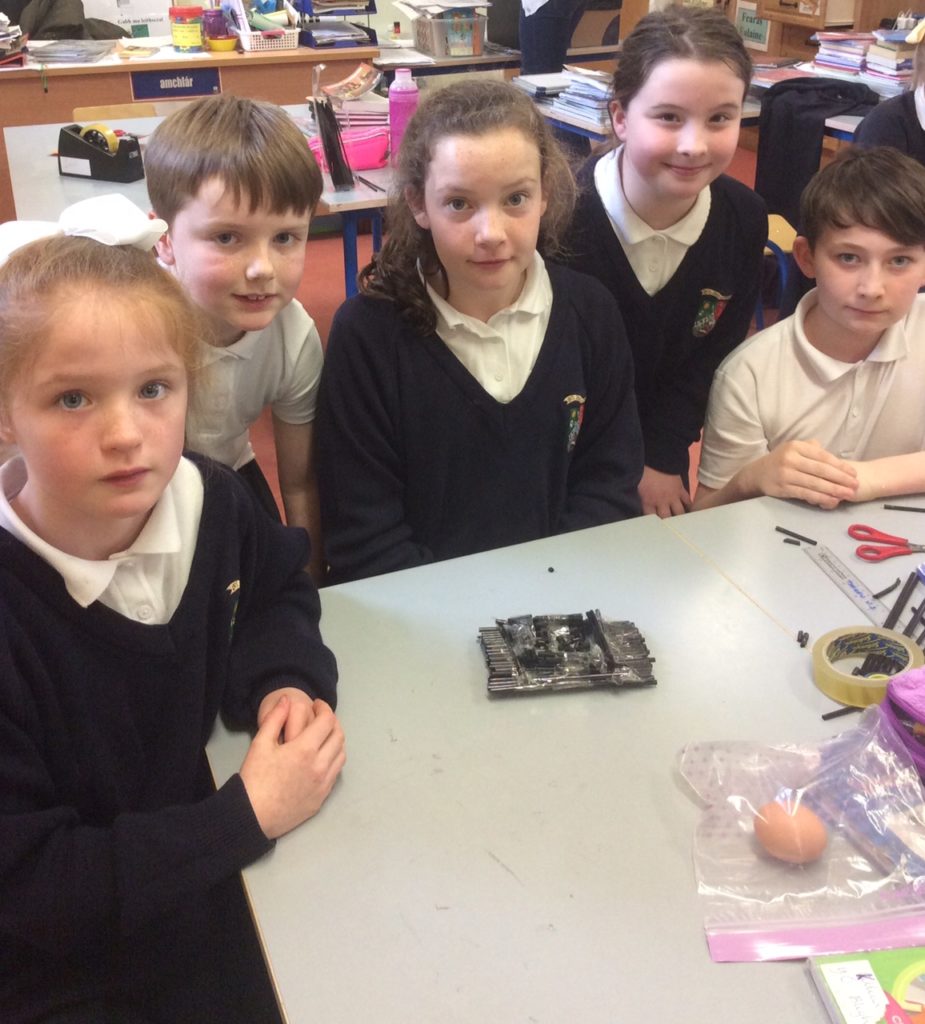
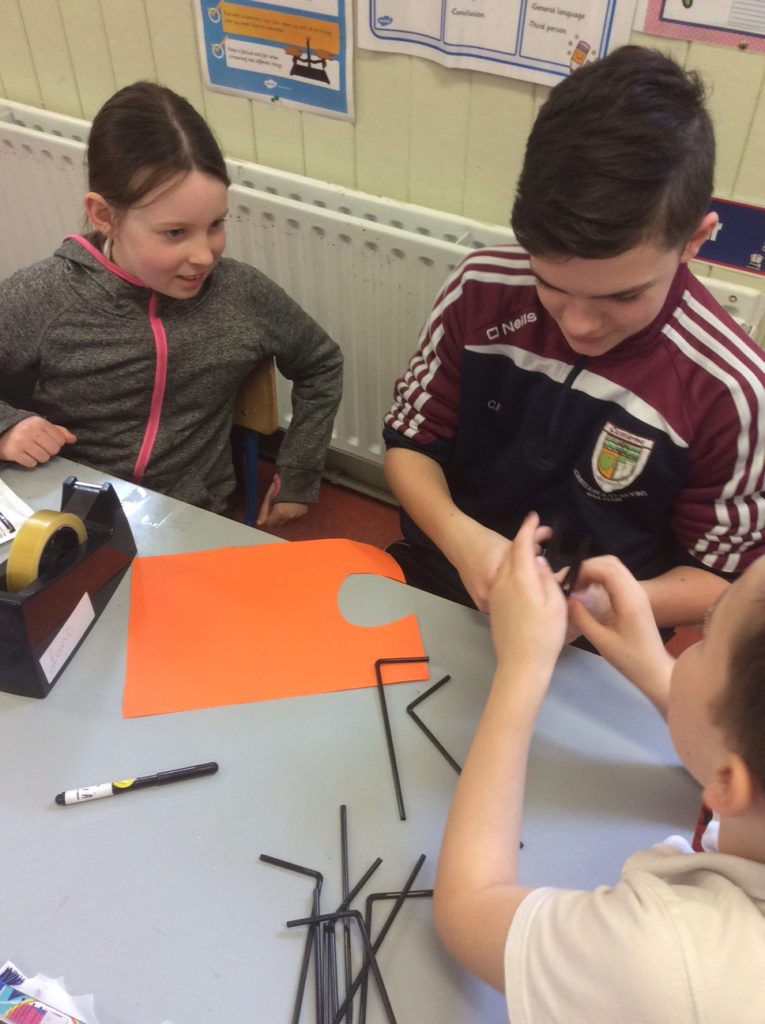
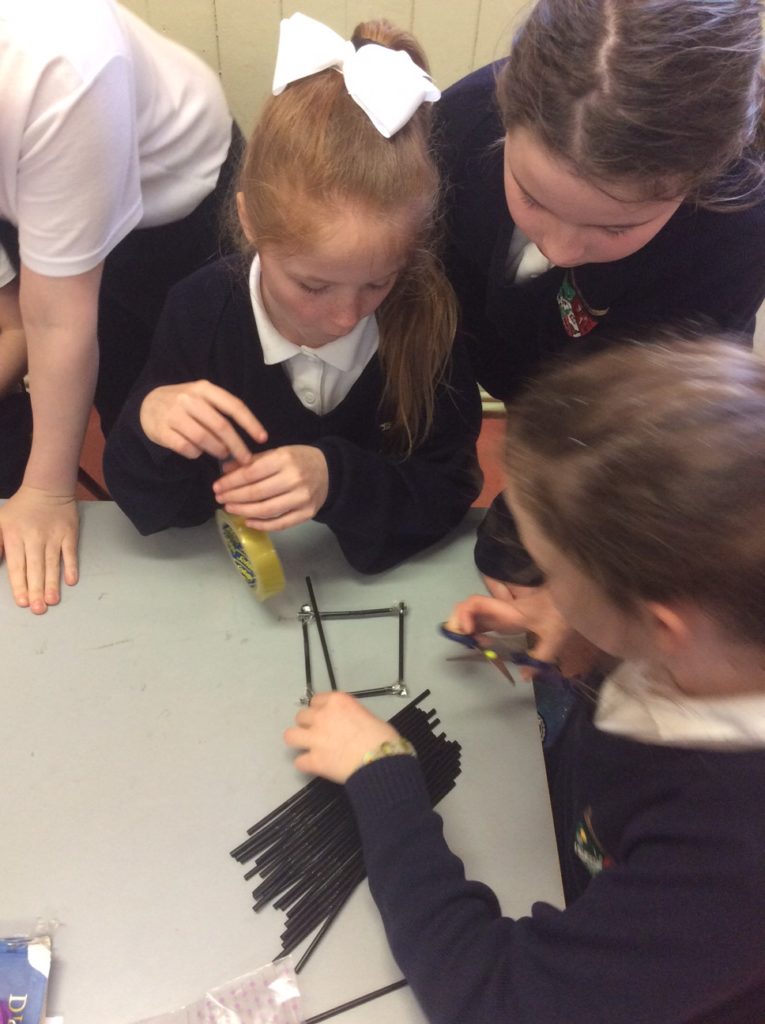
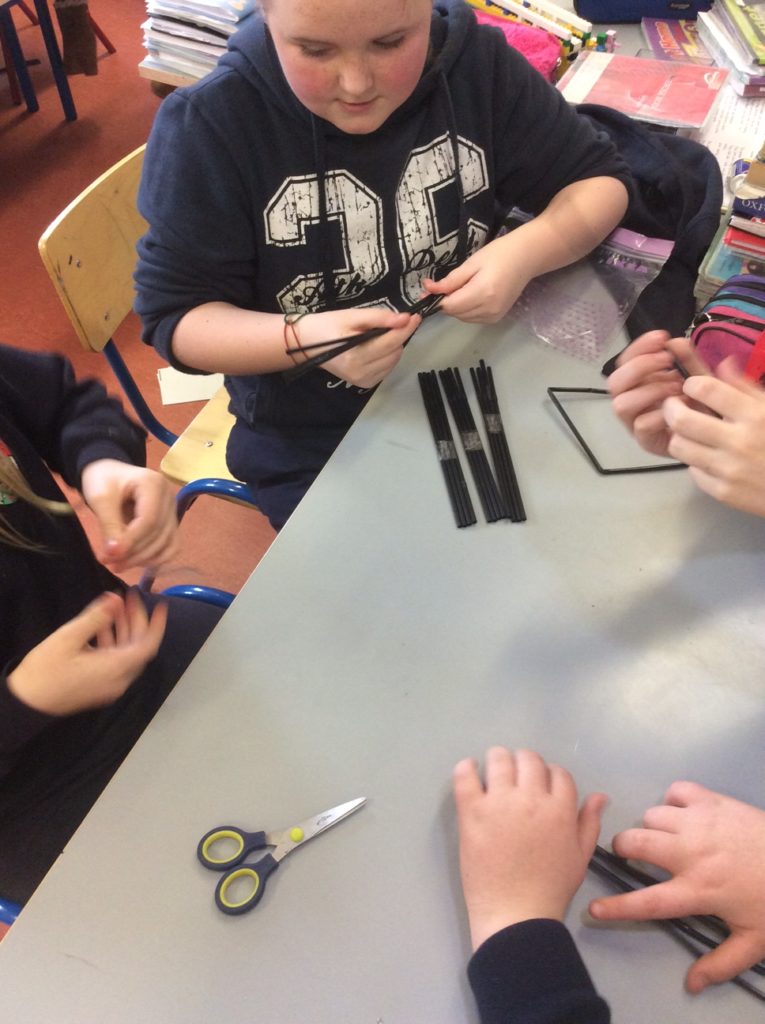
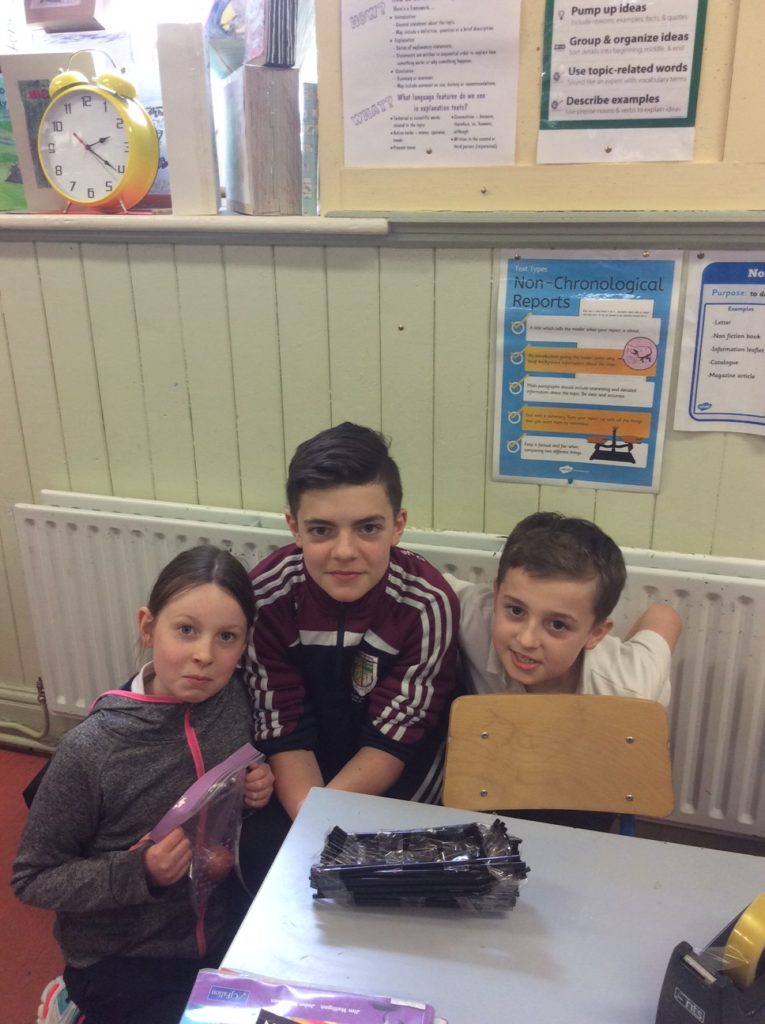
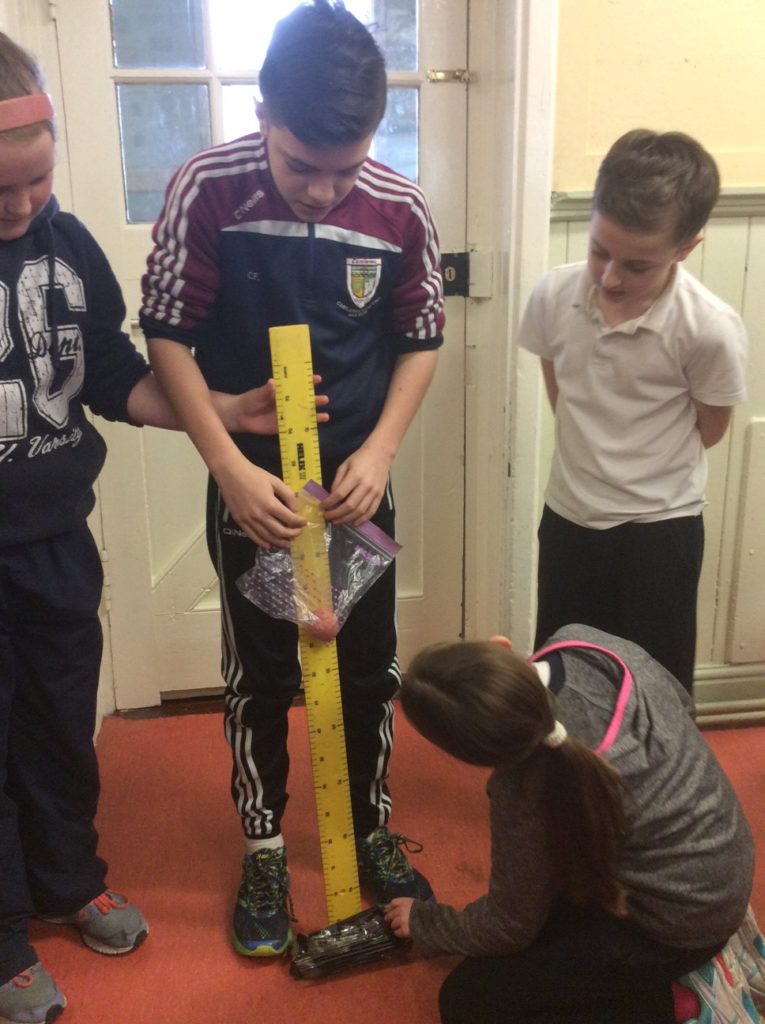
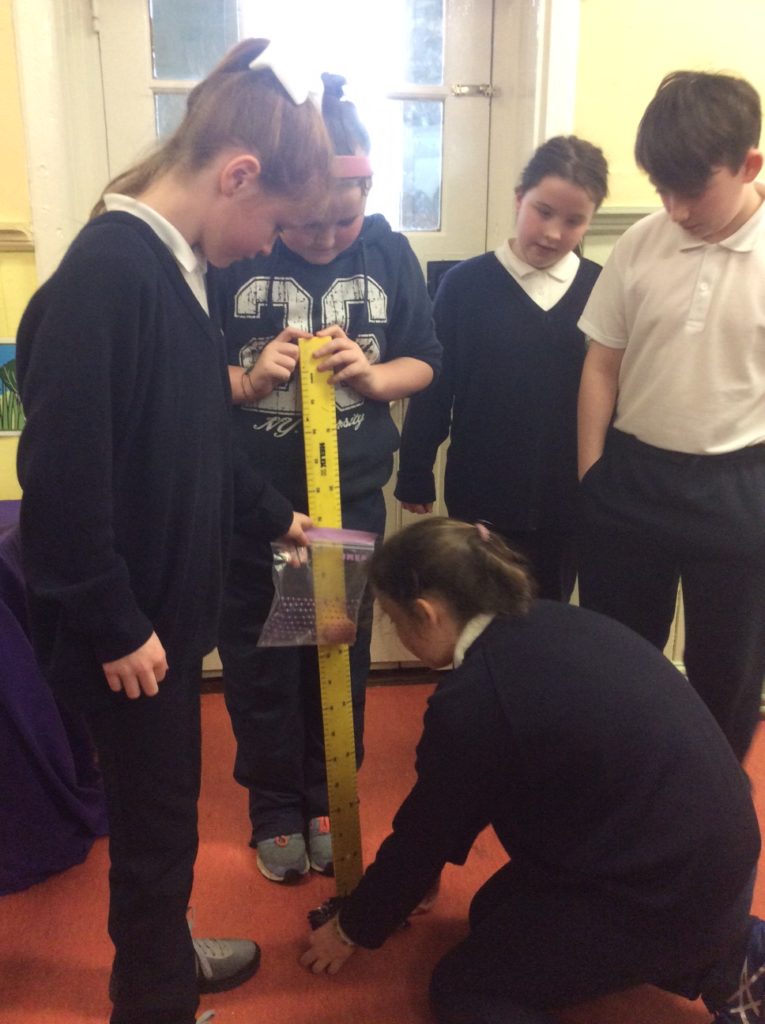
In preparation for our visit to a real windfarm, the children had a go at making their own windmills! On windfarms there are large windmills and the force of the wind turns the windmill around. This mechanical energy is used to make electricity. Windmills are becoming popular in Ireland because wind energy creates cheap electricity, windmills do not pollute the atmosphere and the wind will not ‘run out’. In this activity, the children started with a square template and pulled the corners into the centre point to create the wheel of the windmill. Then they stuck the wheel into the unsharpened end of their pencils and viola! Paper windmills were created!
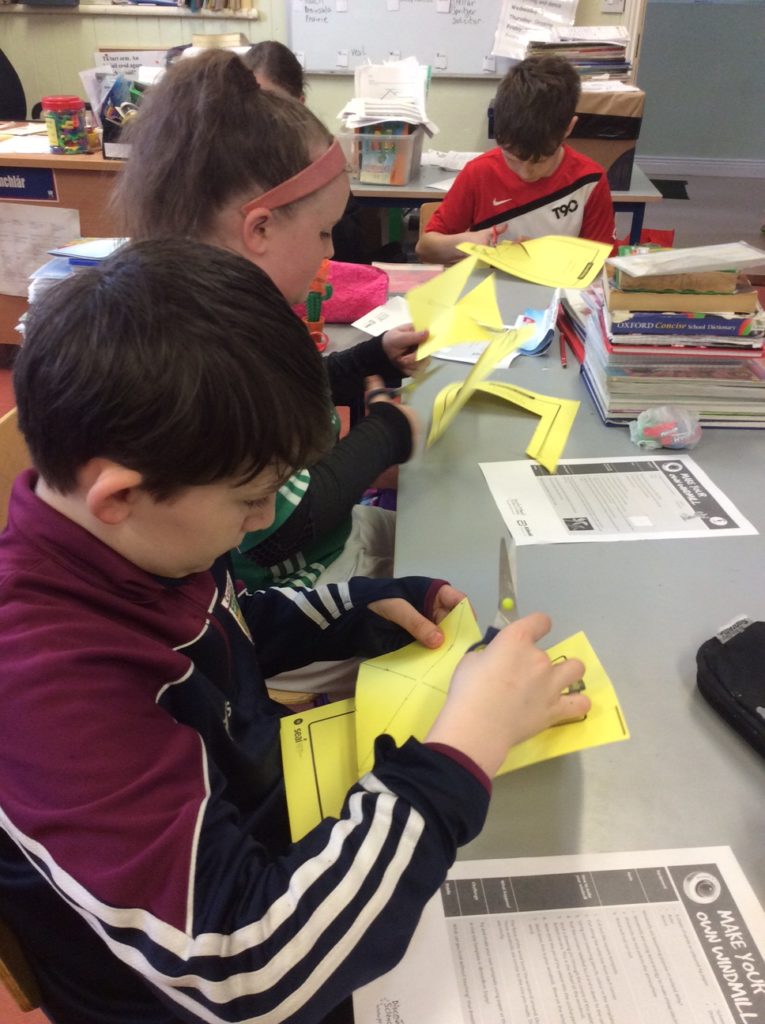
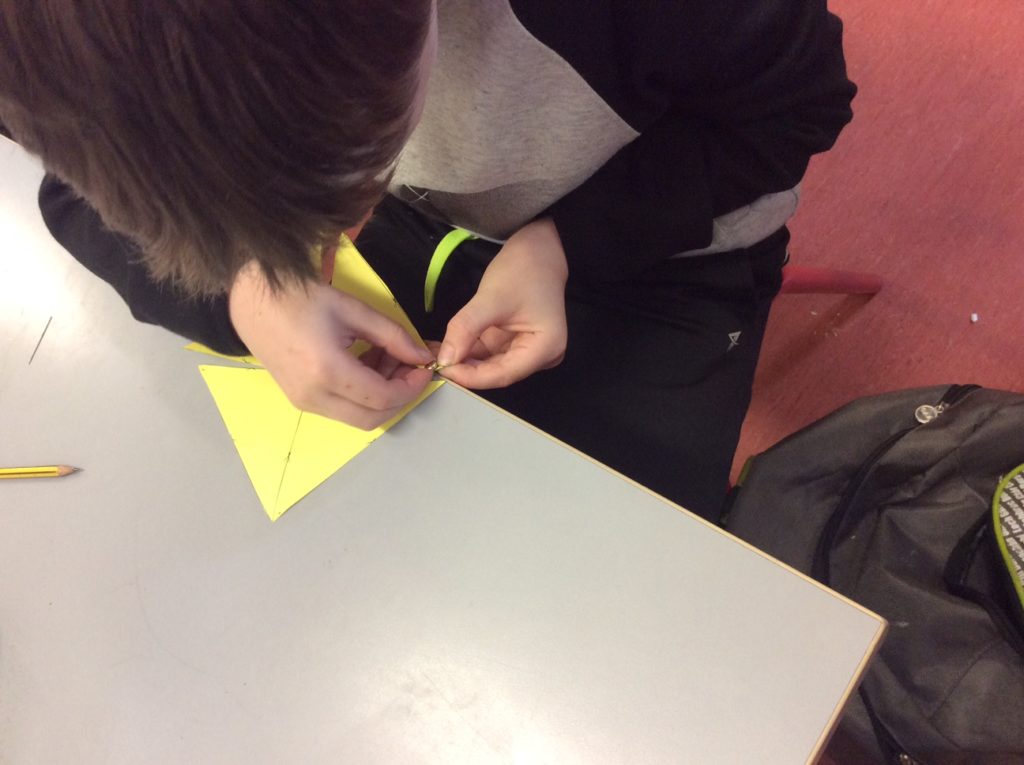
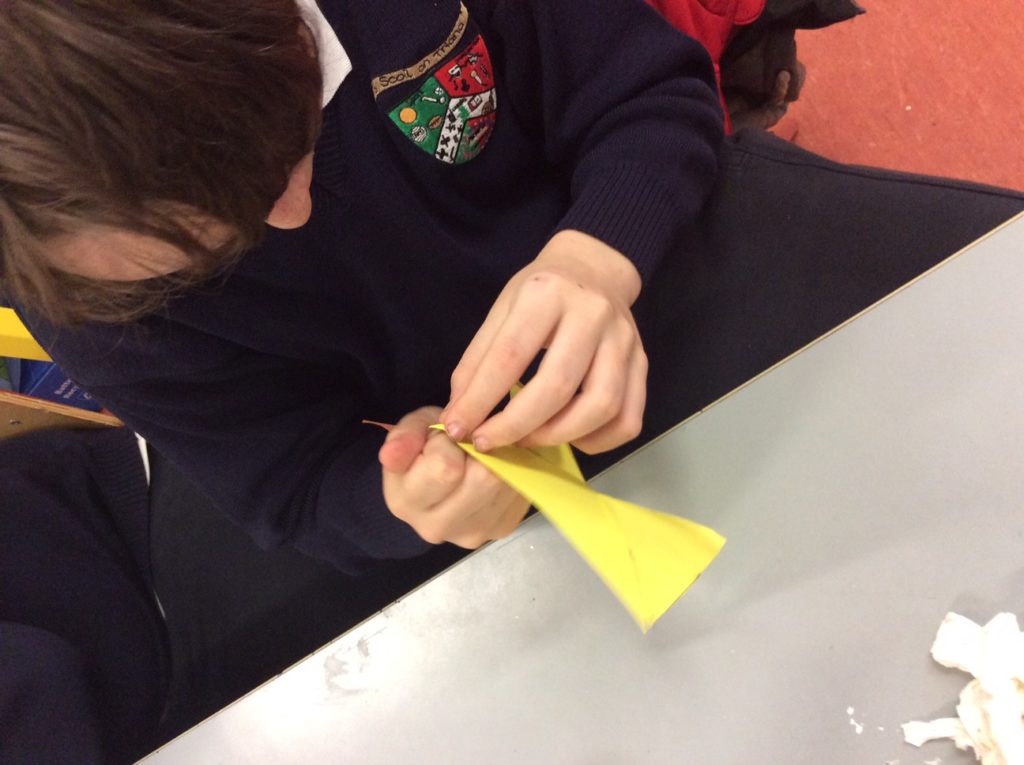
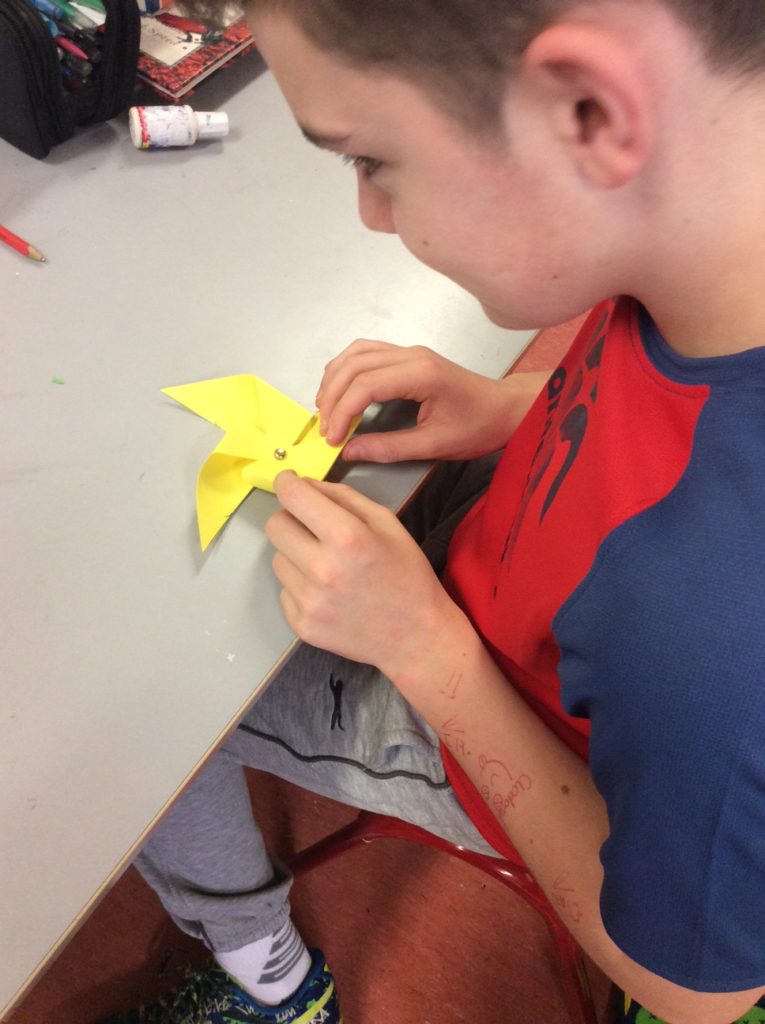
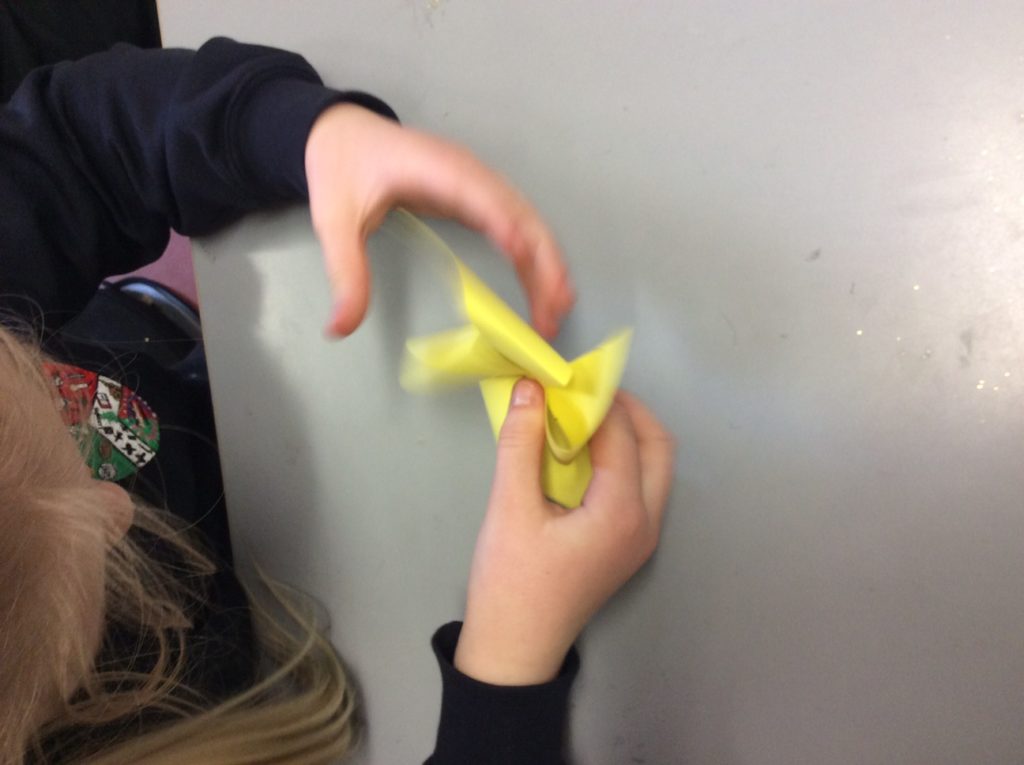
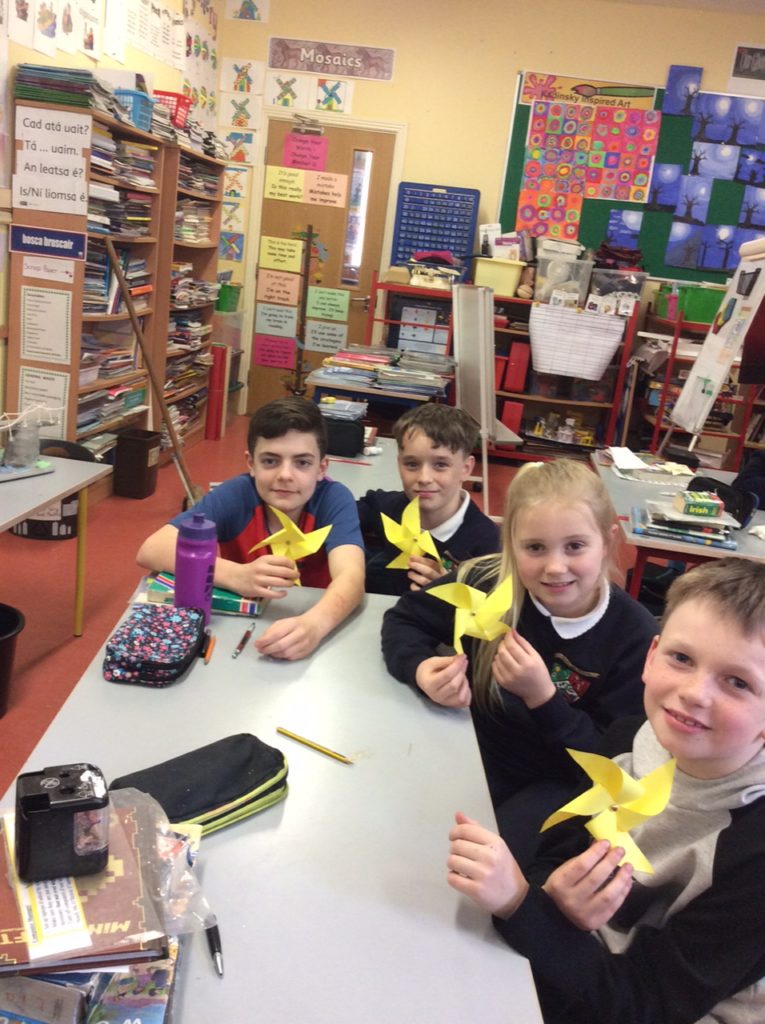
Old houses tend to be damp because they have no ‘damp course’. Bricks absorb moisture from the ground and this moisture rises up the walls. In newer houses a layer of plastic (or other non-absorbent material) placed between the bricks near the ground stops the moisture rising. This is called a ‘damp course’. In this experiment, the junior room investigated what material would make the best damp course. The sheet of plastic proved to be the best!
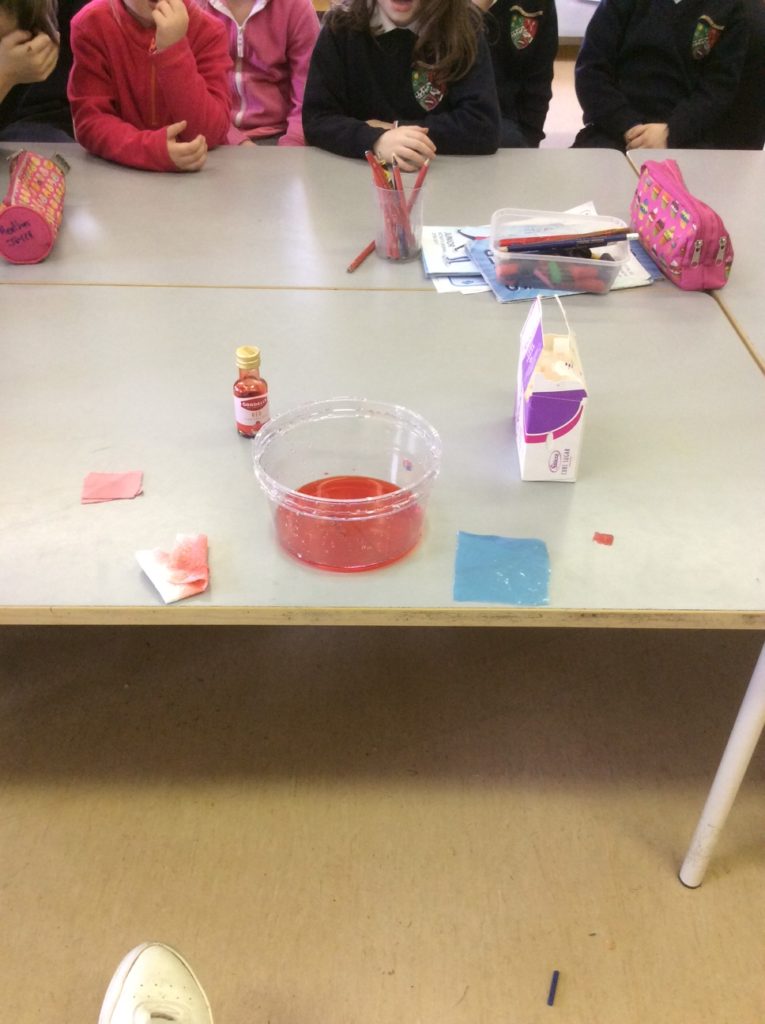
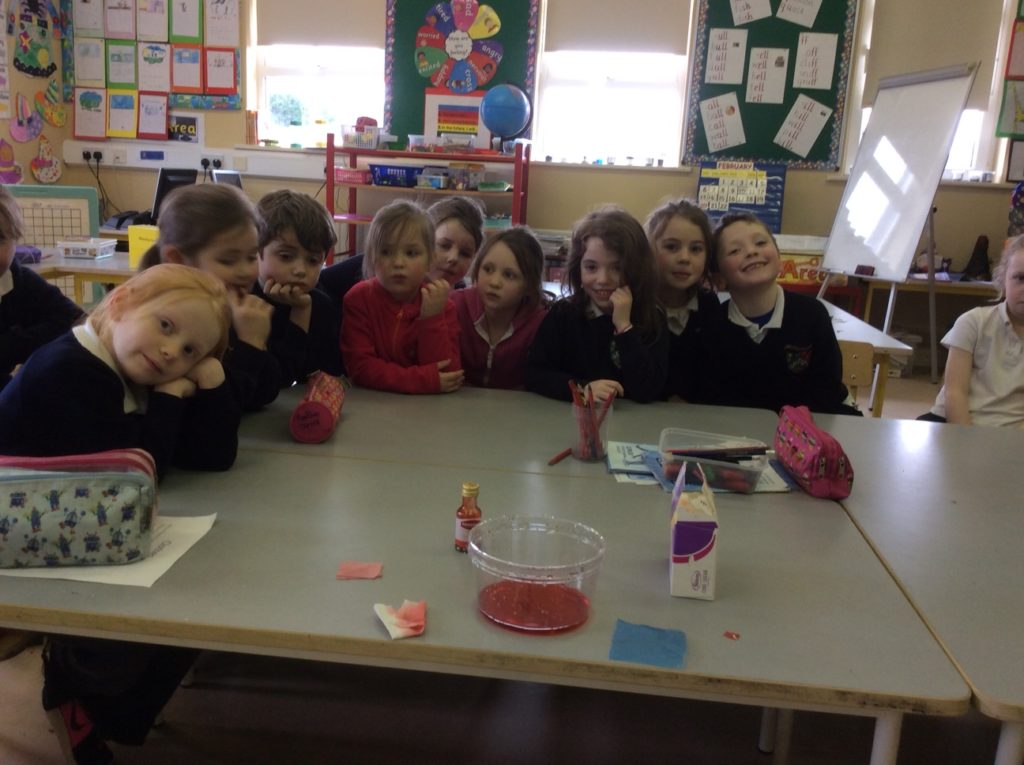
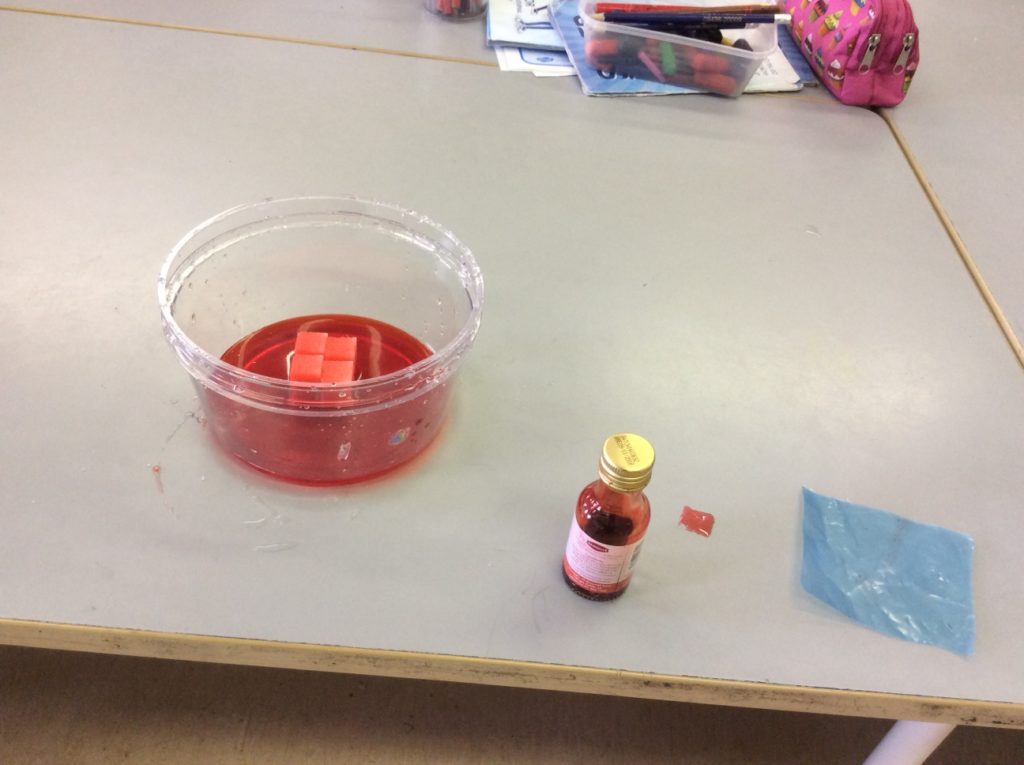
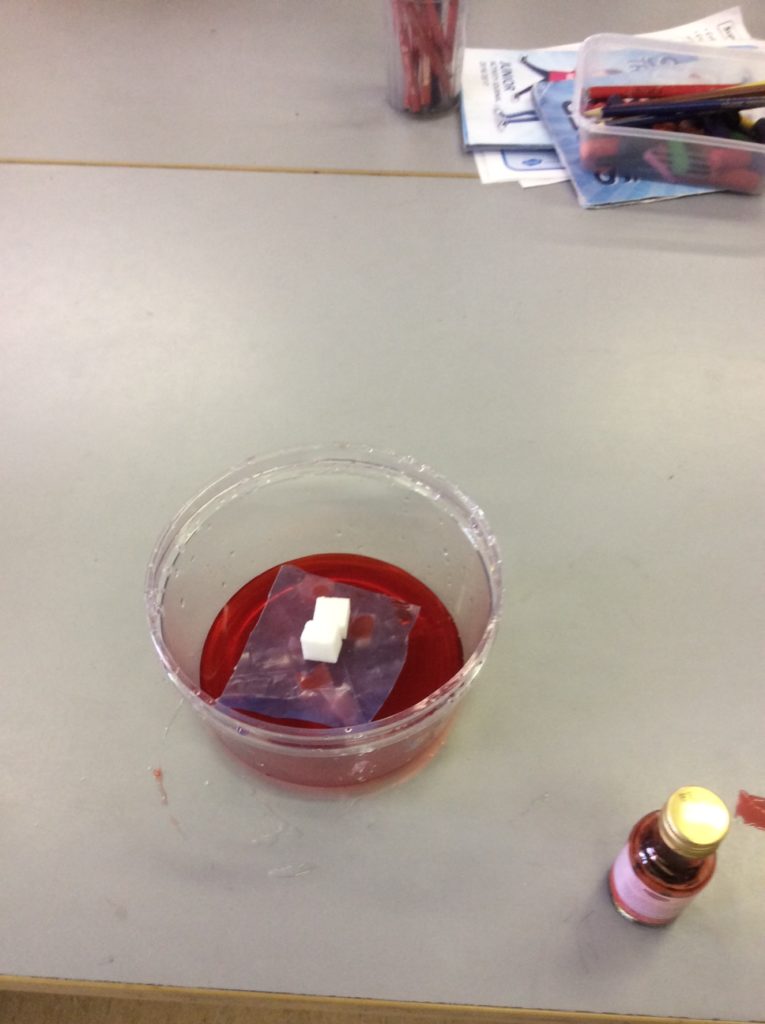
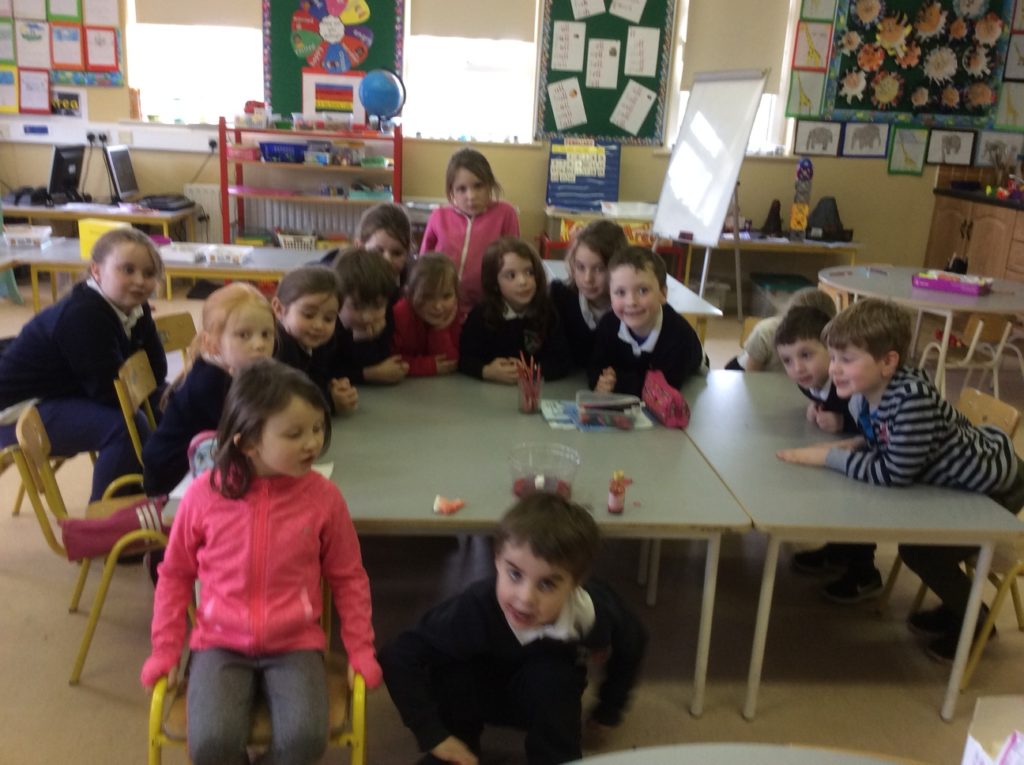
Engineers love solving problems! Our little engineers are no different! In this activity, the children had to design, plan and create a pinball machine using a cardboard box and other recyclables. Their goal was to ensure that a marble rolled freely from its starting point right to the finish line!
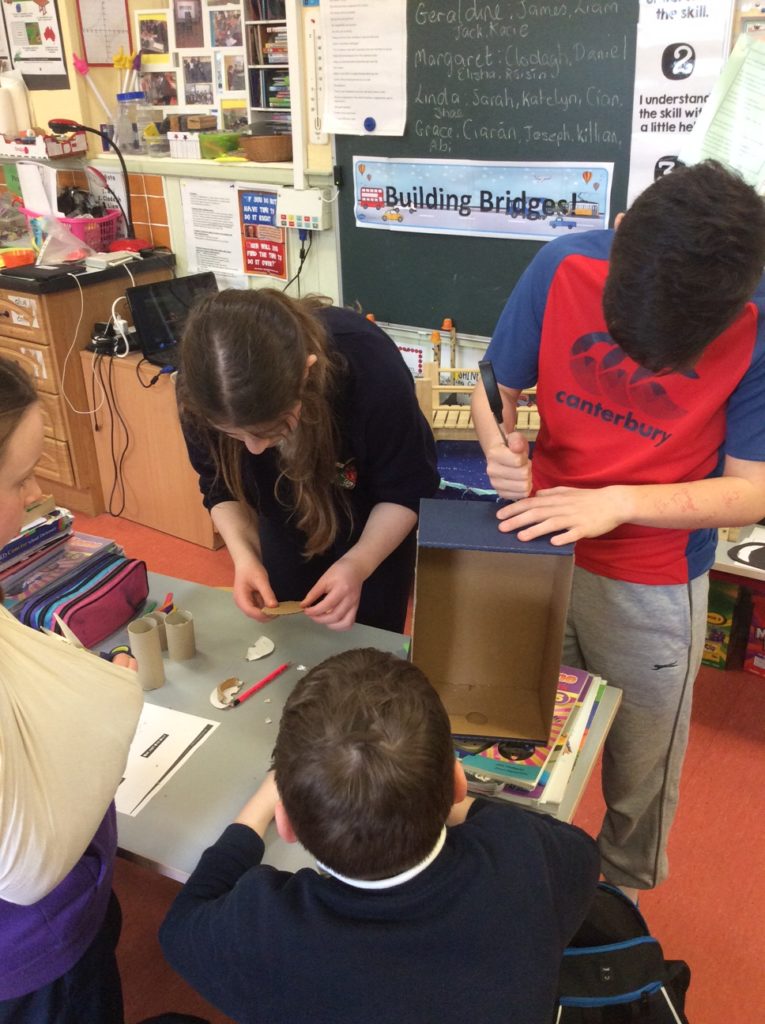
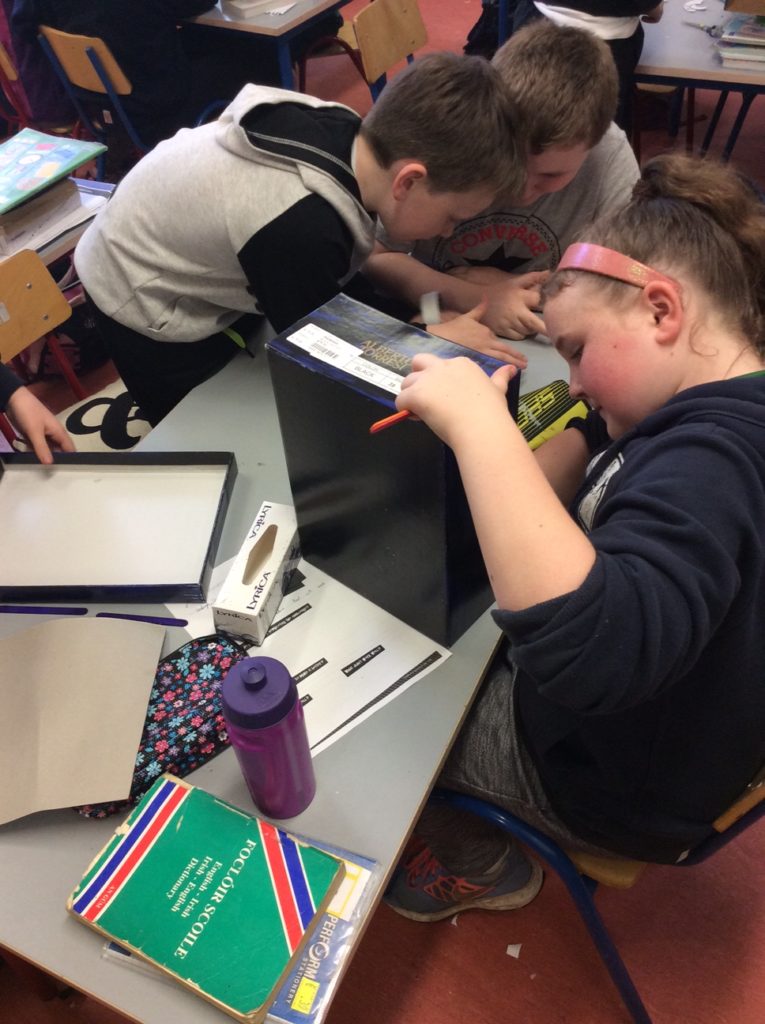
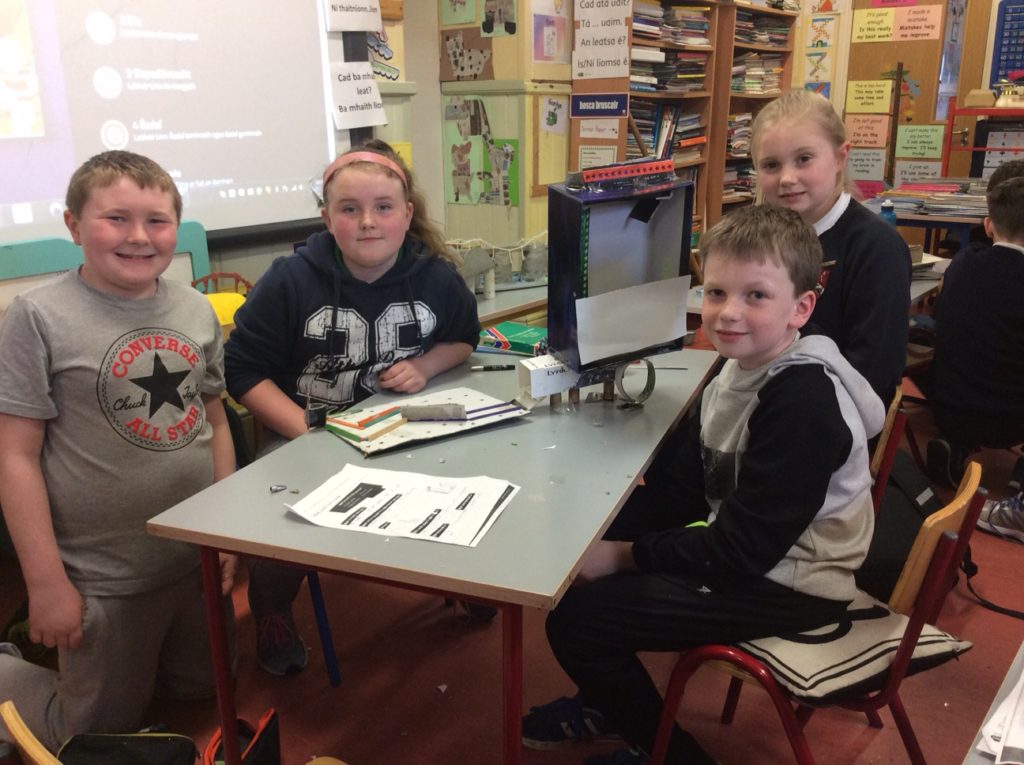
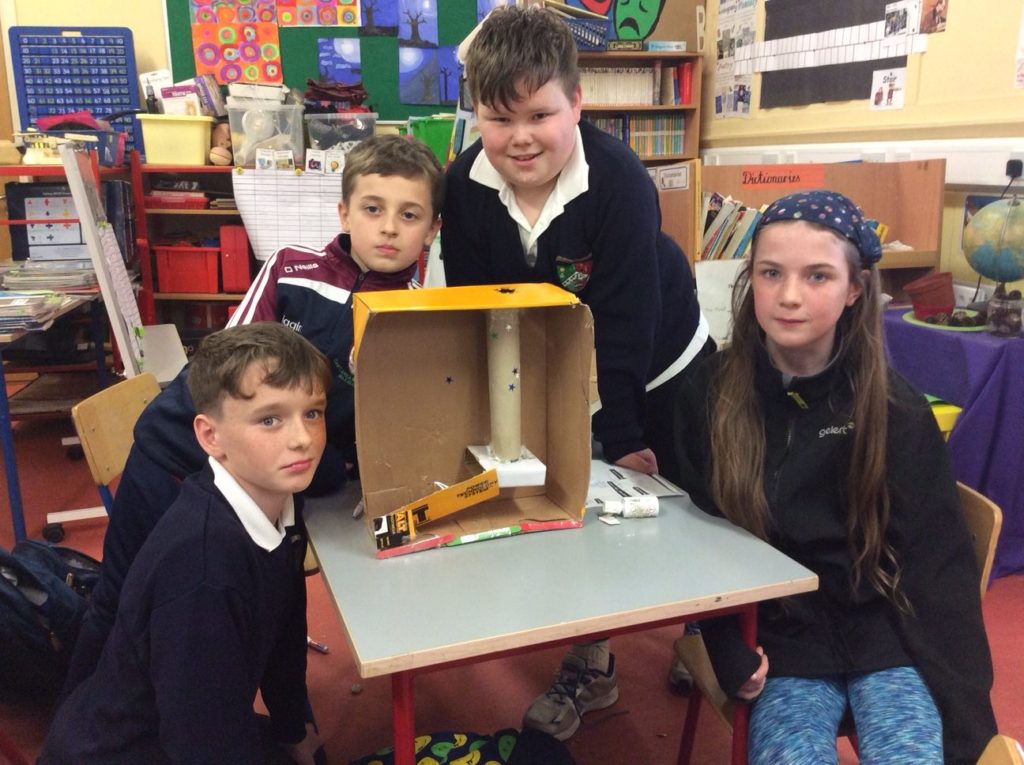
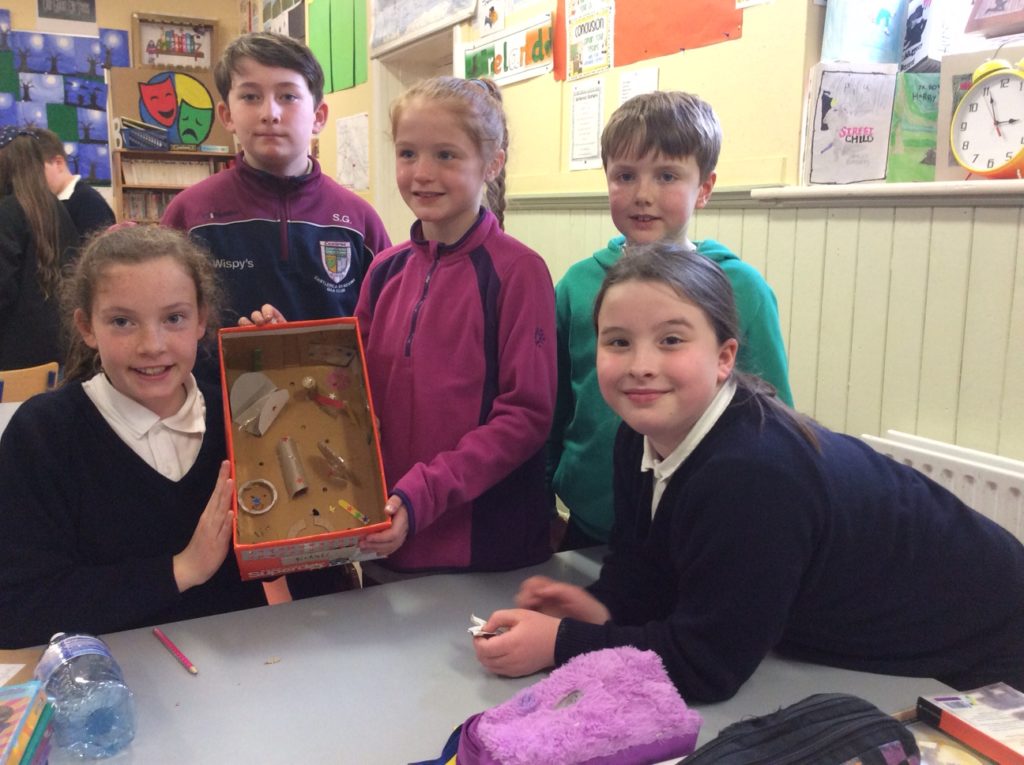
On our tour of Castlerea, our local town, we examined the types of bridges built in the past to add to our knowledge of ‘bridge engineering’.
